By coincidence, I received an offer to work in Uganda for some ten days in the autumn of 2023. I was thrilled – on the one hand, it was a very exciting professional challenge and on the other, the destination couldn’t have been more interesting and exotic for me as a dedicated traveller in this beautiful world.
Yet, there was a “problem.” There is a Serbian saying that says, “They don’t invite a donkey to lead the dance at the wedding, but to carry water.” I was engaged to work, not to wander around the country, as I usually like to do.
And yet, although I was tied to my clients, I had occasional pockets of free time and space to take a stroll, so I managed to see some bits of this, from what I could gather, exceptionally interesting and beautiful country. I can only hope that, at some point, as I’ve been planning, I will visit Uganda privately when I’ll have all the time to fulfil my own desires.
To start with, my work took me to the town of Masindi in the northwest of the country and here is a map showing where I’ve been during this stay in Uganda.
After landing at the international airport in the city of Entebbe and going through border and customs formalities, we set out on the main road to Masindi. The road first took us through parts of Kampala, the capital of Uganda, which is about 36 km away from Entebbe. It was already late afternoon, so I had only a relatively short amount of time during the daylight hours to capture scenes through the car window, but I was absolutely thrilled nonetheless. It was a new destination and I found it very interesting to observe the landscapes, the people and the colours.
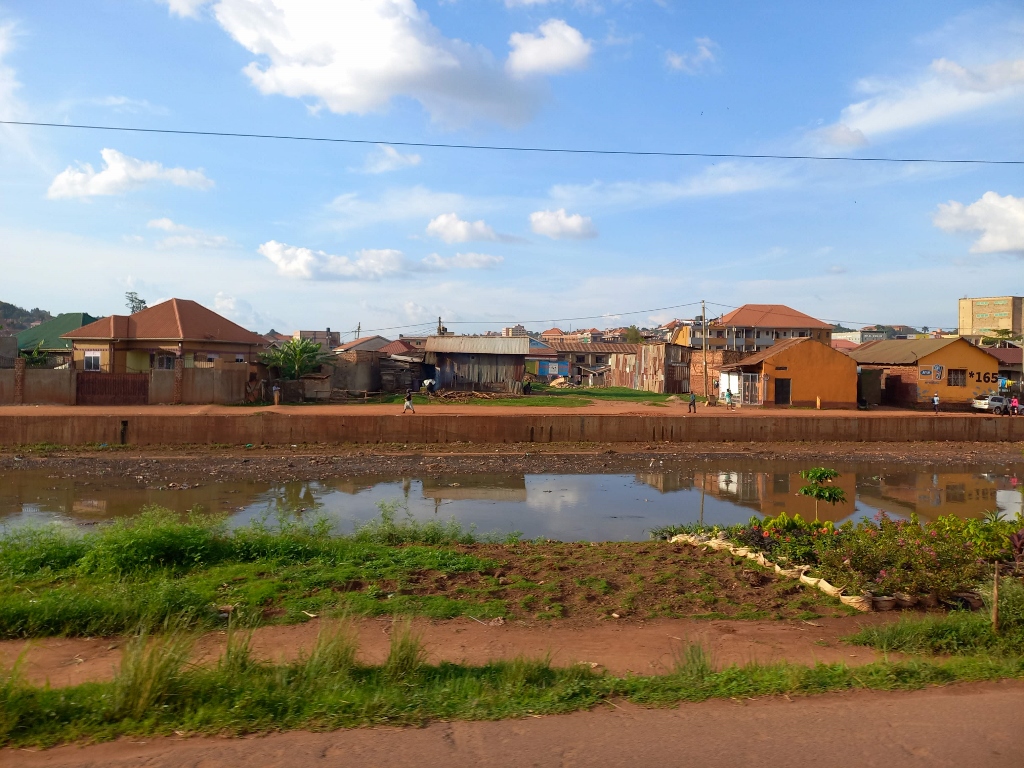 Sights by the road
Sights by the road
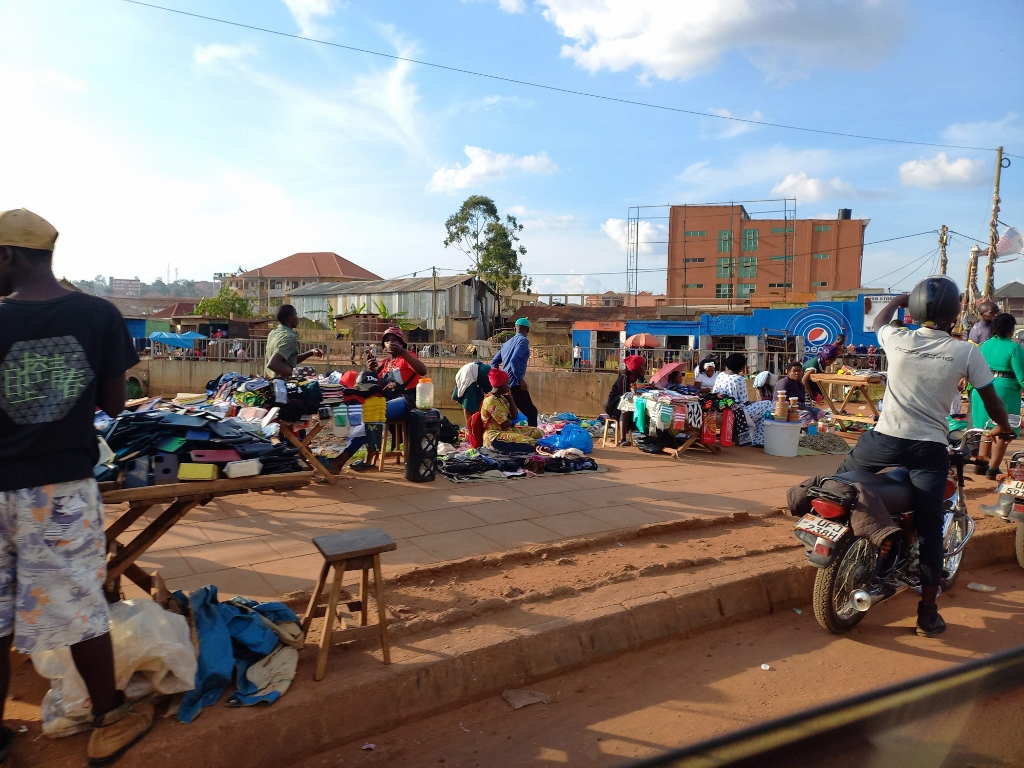 Sights by the road
Sights by the road
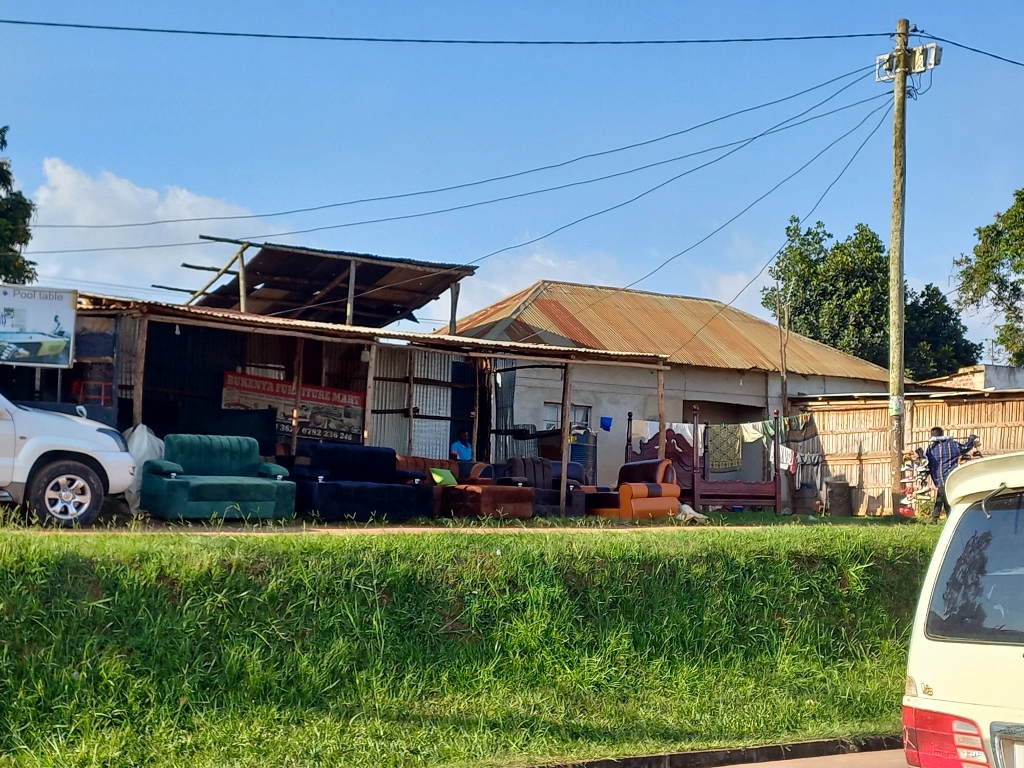 Sights by the road
Sights by the road
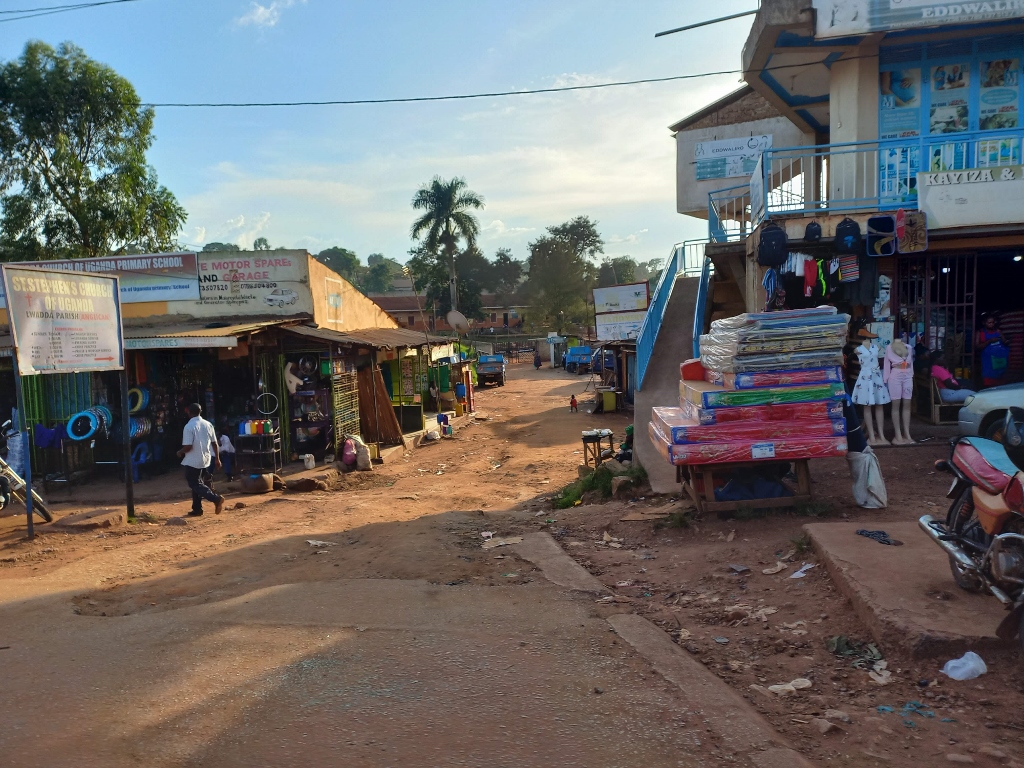 Sights by the road
Sights by the road
Once we left the urban areas, houses near the road were still visible, but now the greenery took precedence.
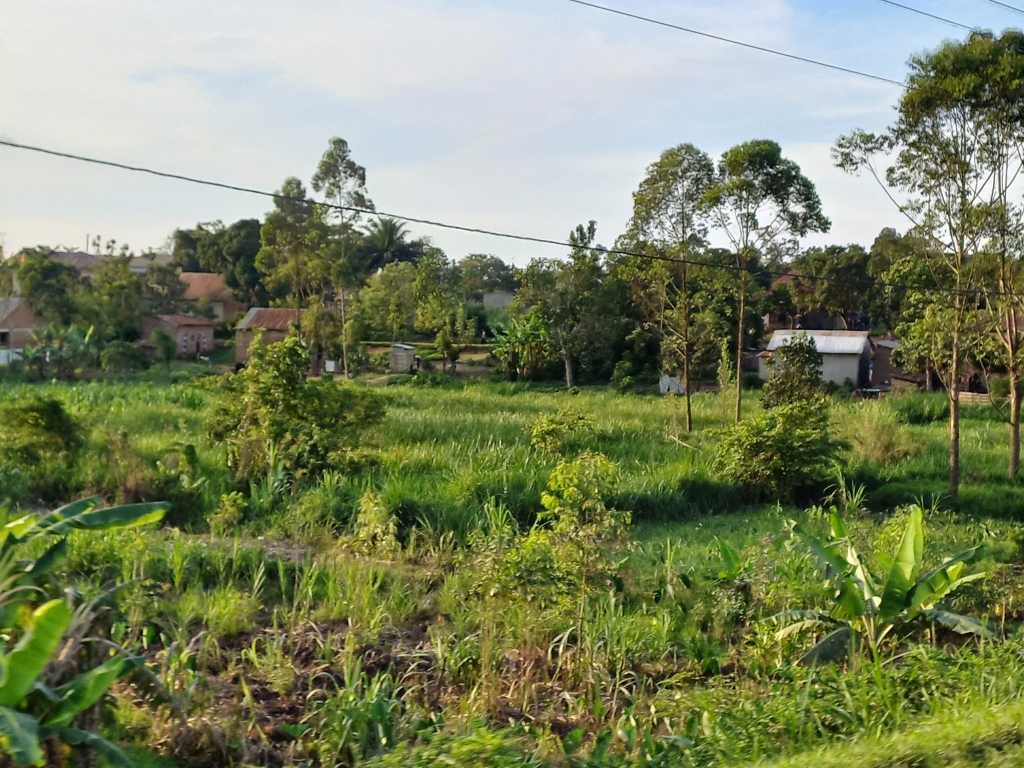 Sights by the road
Sights by the road
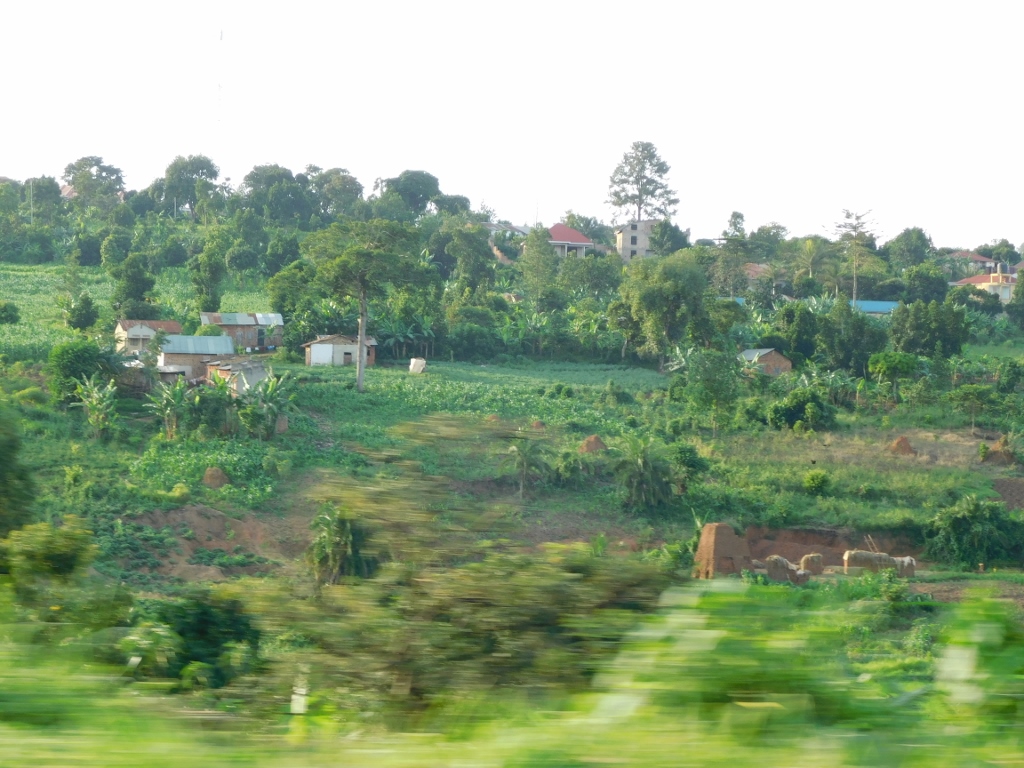 Sights by the road
Sights by the road
Soon, the darkness fell and some lightning could be seen tearing through the sky in the distance. That night, I woke up at one point because an extremely heavy downpour could be heard through the window of my room – it seemed like one of those that could lead to the proverbial “biblical floods,” but everything was fine the next morning.
Considering that I was mostly occupied during the day and taking into account my interests, I often spent my free periods before going to work and after returning, observing and photographing birds (and occasionally insects). I think people around me initially thought I was weird, but I was pleased when some of them started to point out for me some interesting birds they spotted or even took photos of birds or insects themselves and showed them to me later. To stay on the subject, here is now a large series of bird photographs, clearly illustrating the incredible biodiversity for which Uganda is known, mainly limited to the avian world on this occasion.
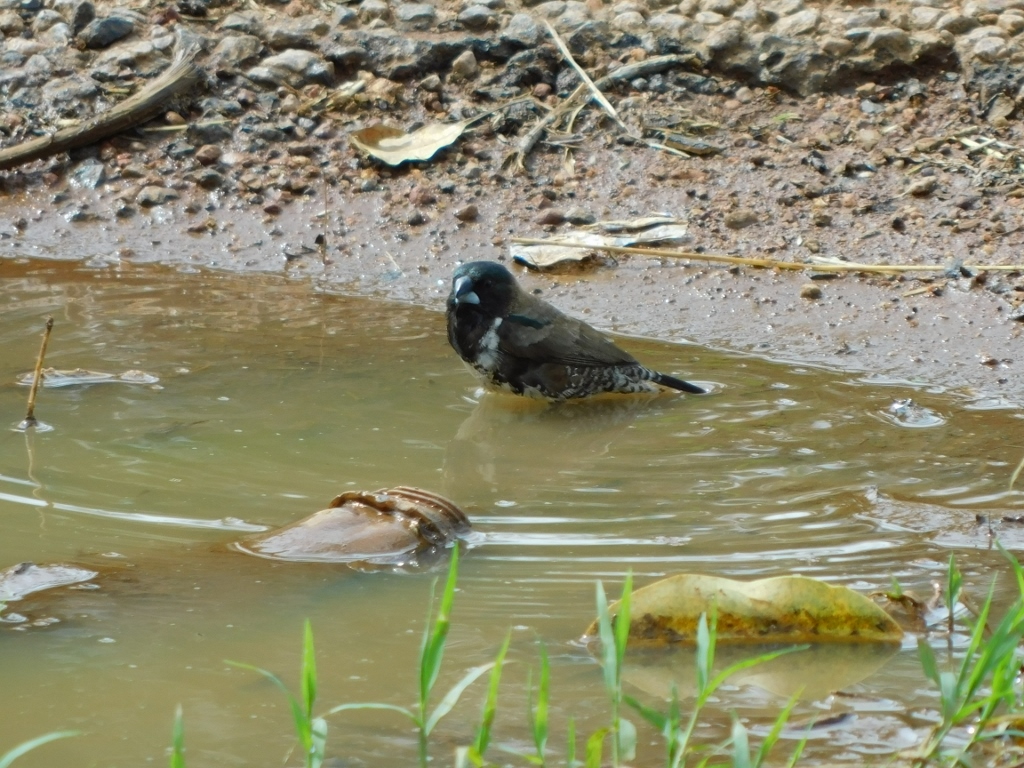 Black-and-white mannikin (Spermestes bicolor)
Black-and-white mannikin (Spermestes bicolor)
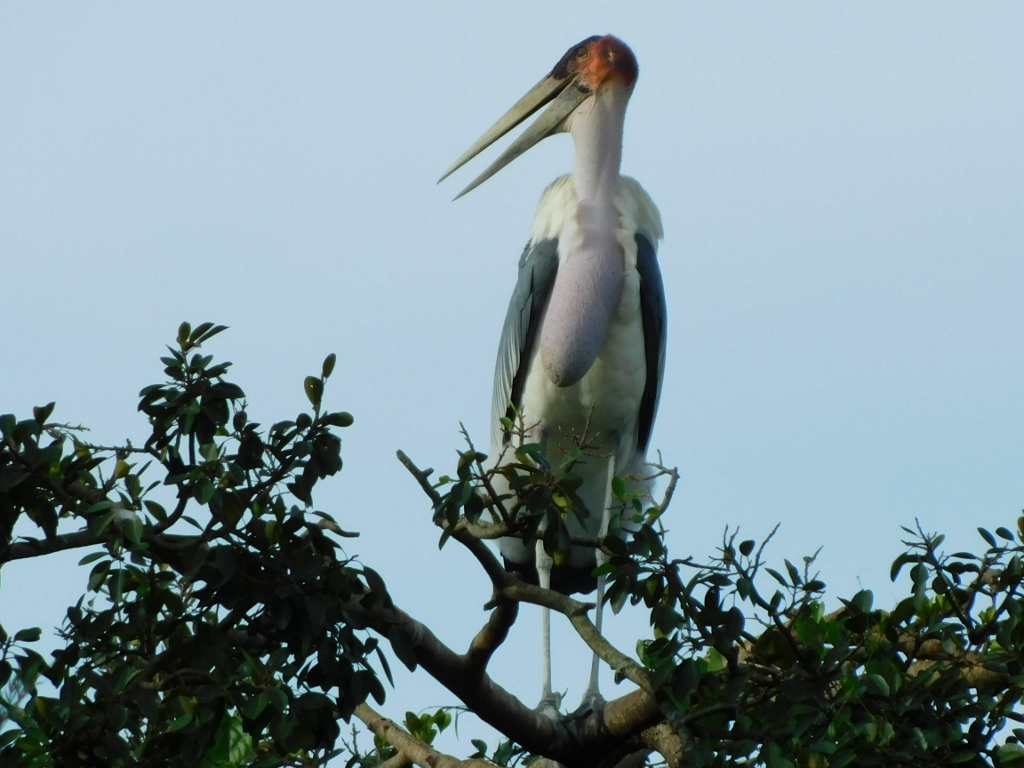 Marabou stork (Leptoptilos crumenifer)
Marabou stork (Leptoptilos crumenifer)
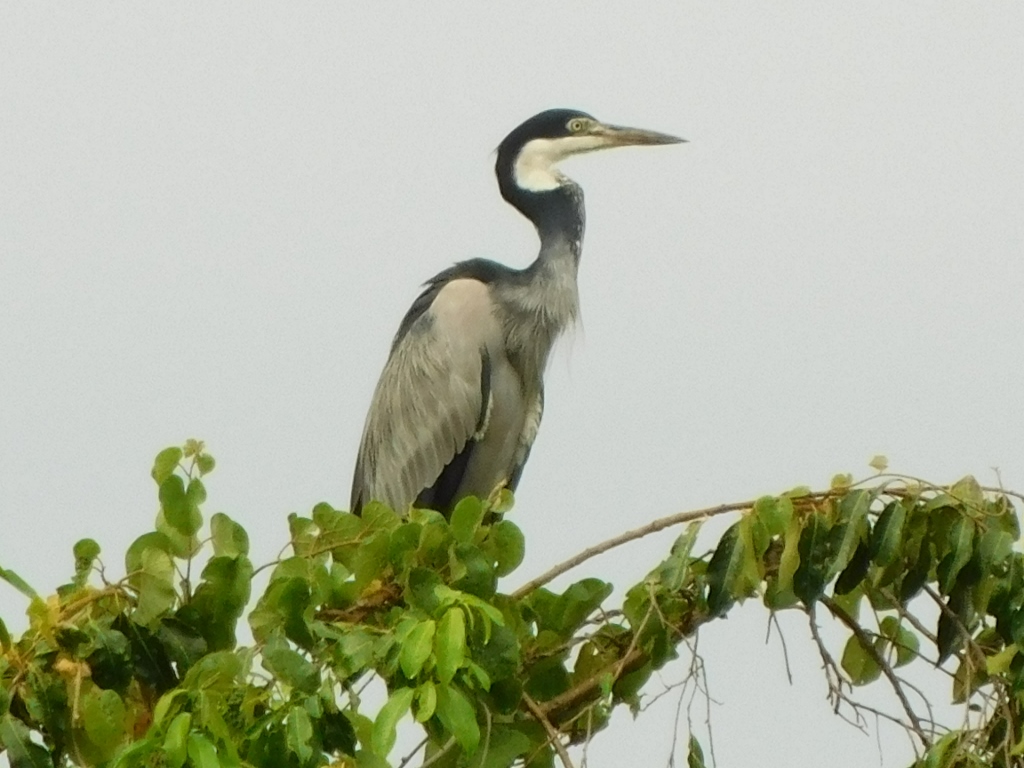 Black-headed heron (Ardea melanocephala)
Black-headed heron (Ardea melanocephala)
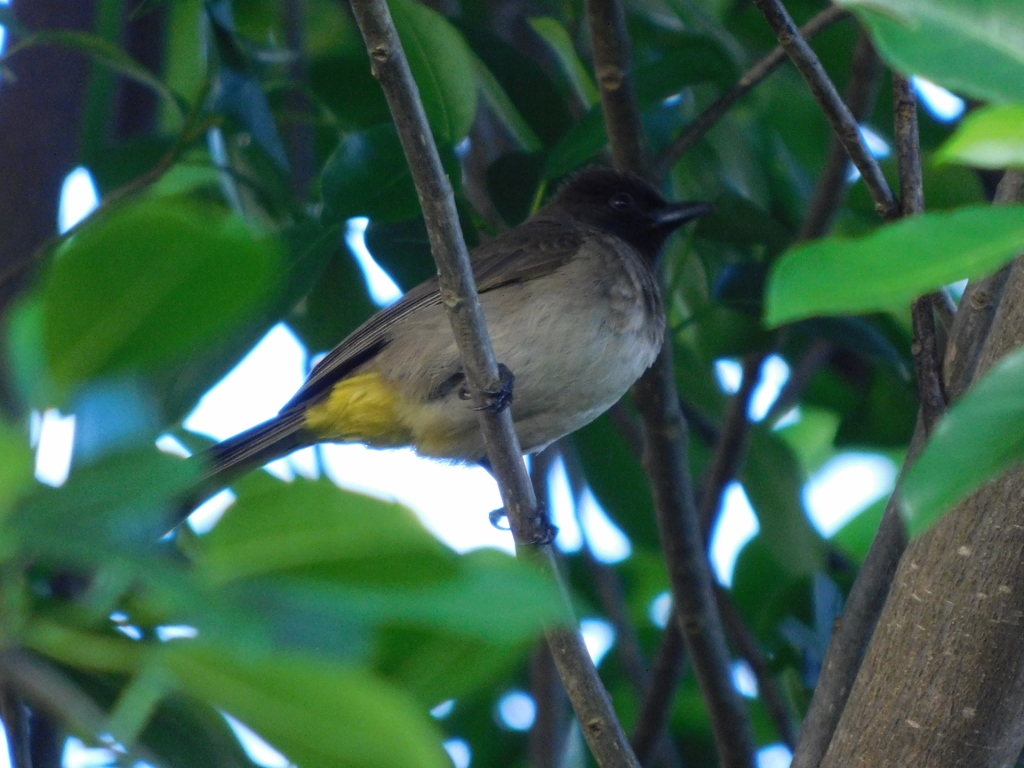 Common bulbul (Pycnonotus barbatus)
Common bulbul (Pycnonotus barbatus)
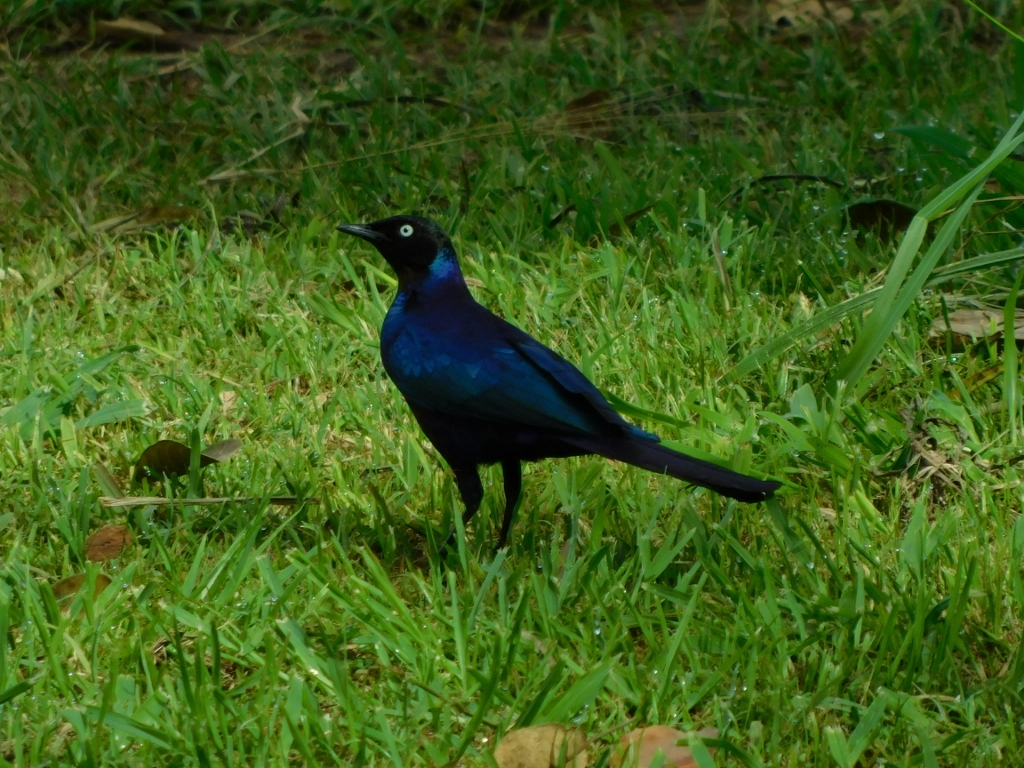 Rueppell’s Glossy Starling (Lamprotornis purpuroptera)
Rueppell’s Glossy Starling (Lamprotornis purpuroptera)
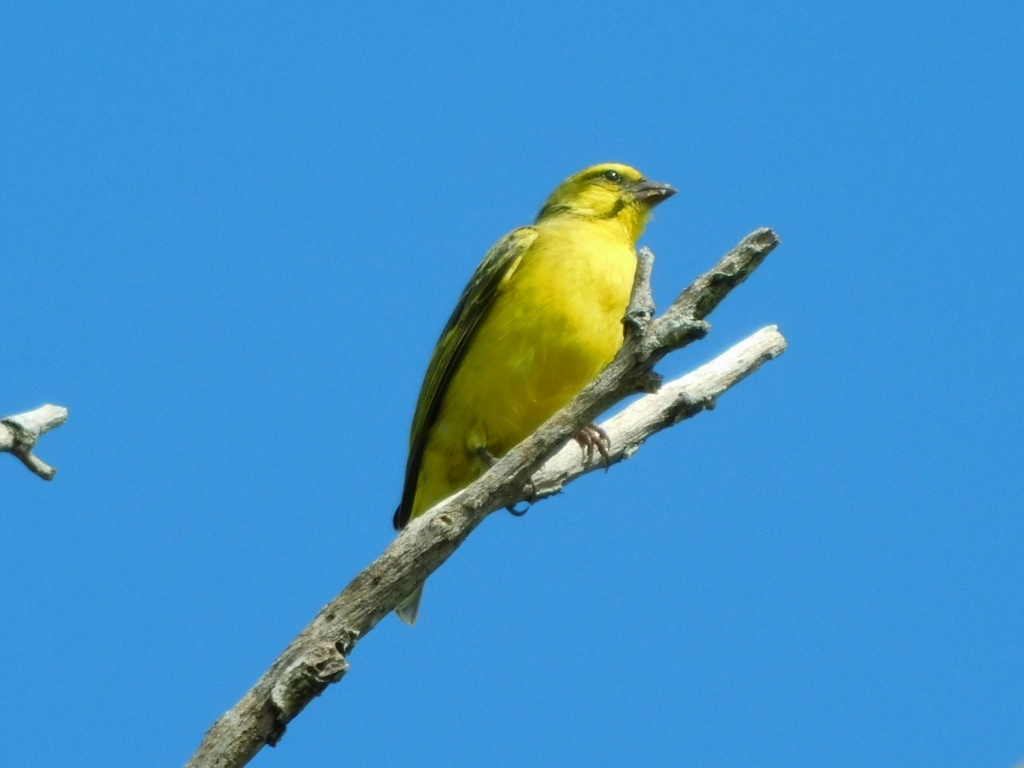 Yellow-fronted canary (Crithagra mozambica)
Yellow-fronted canary (Crithagra mozambica)
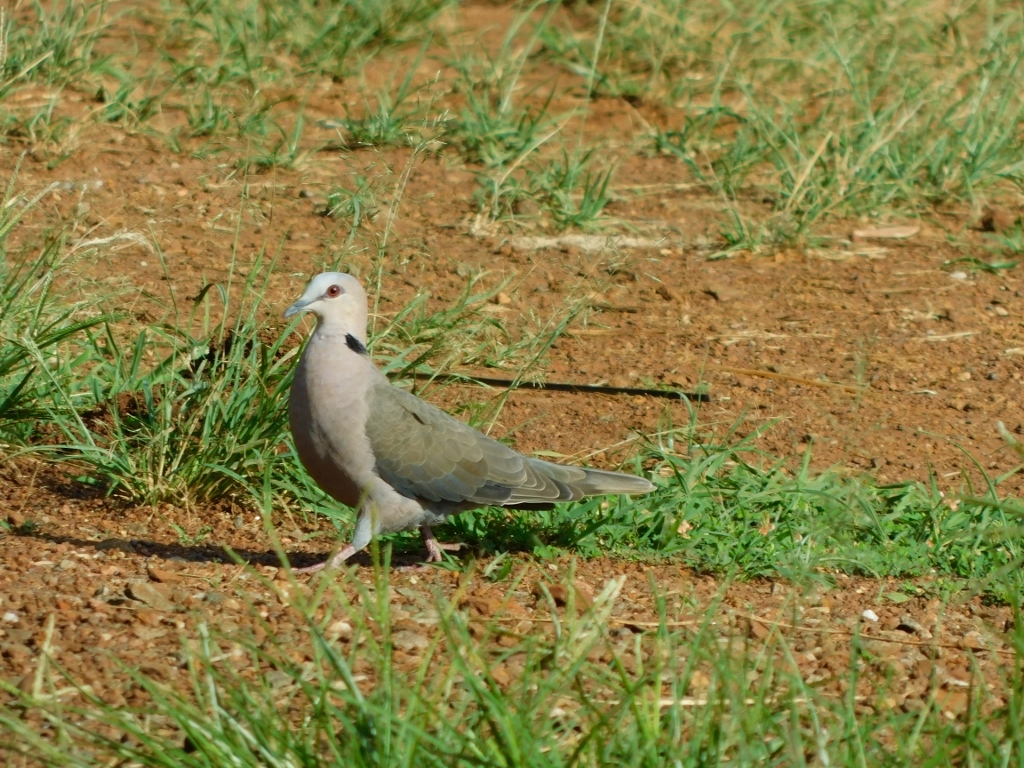 Red-eyed Dove (Streptopelia semitorquata)
Red-eyed Dove (Streptopelia semitorquata)
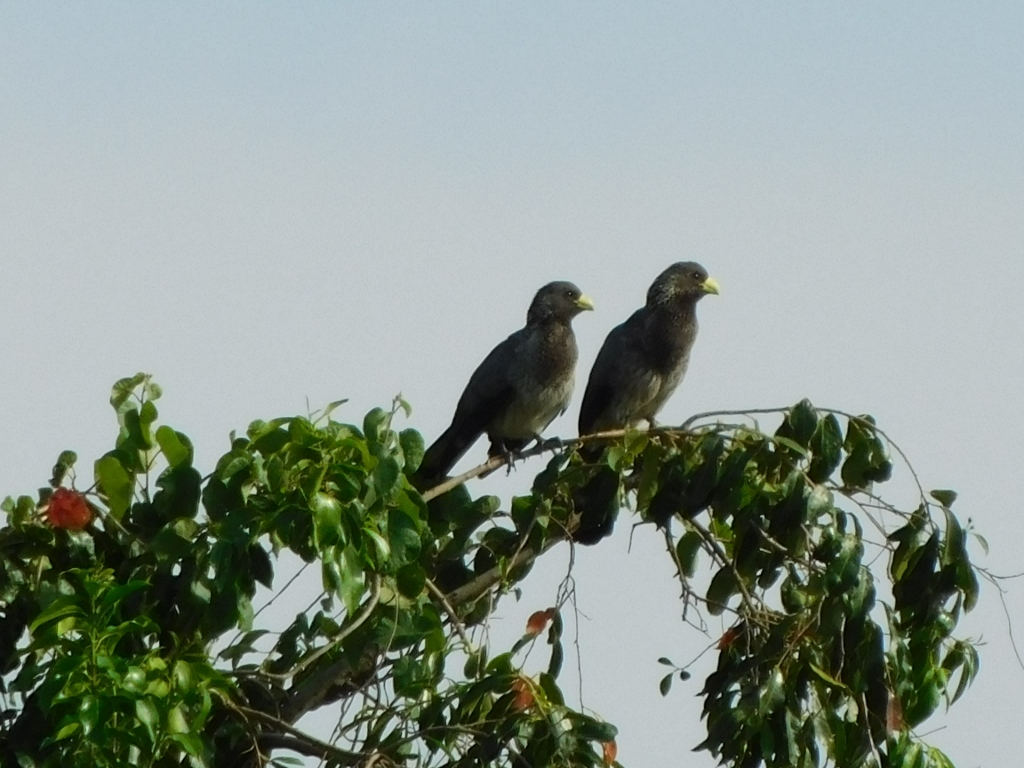 Eastern plantain-eater (Crinifer zonurus)
Eastern plantain-eater (Crinifer zonurus)
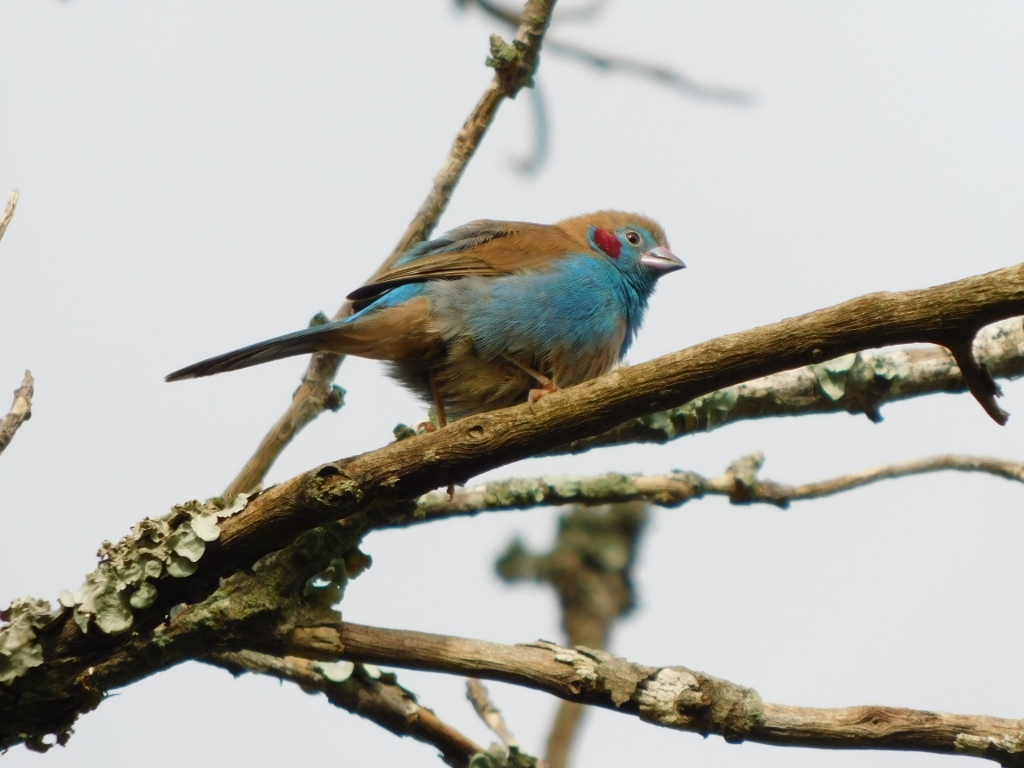 Red-cheeked cordonbleu (Uraeginthus bengalus)
Red-cheeked cordonbleu (Uraeginthus bengalus)
As for weavers, they belong to family Ploceidae and there are several species of them in Uganda. I have indeed captured quite distinct species of birds from this family, but some differences among them are relatively small (in my view), so I didn’t put much effort into precise identification. The challenge with identification can be further complicated by differences between males and females, as well as between adults and juvenile individuals.
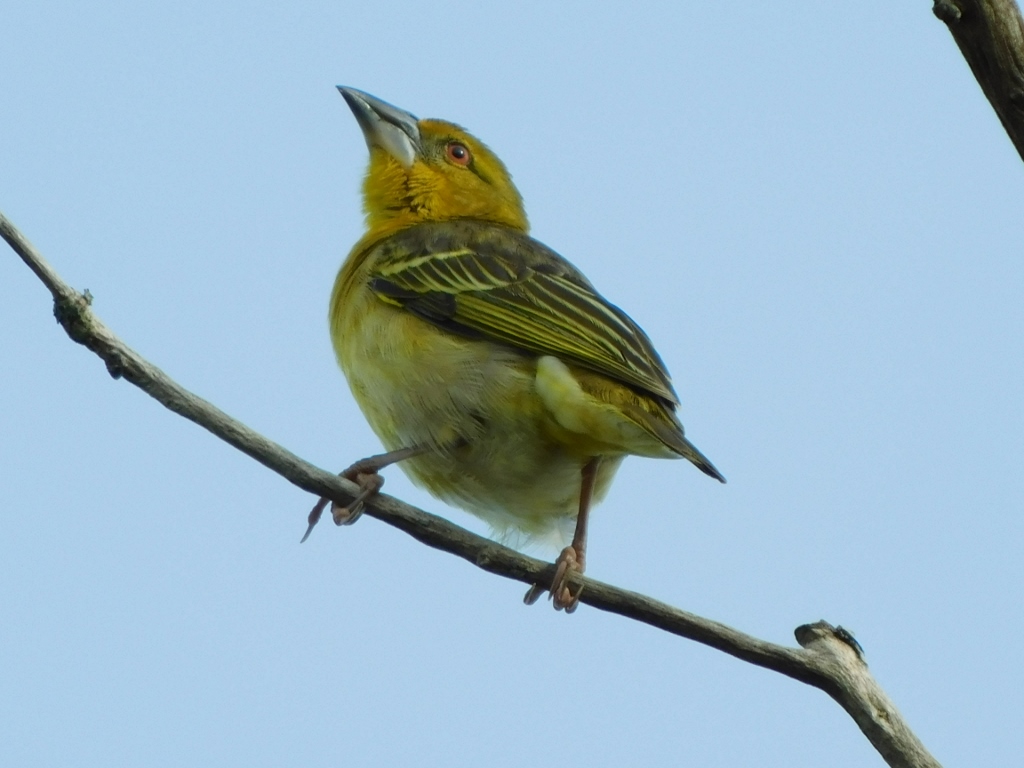 A weaver
A weaver
The same goes for sparrows – there are several species and I must admit that I wasn’t too keen on going into all the nuances and differences between them. What they have in common is the family they belong to – Passeridae. Still, as an addition to my collection of photographed birds, here is a specimen of a grey-headed sparrow (Passer griseus).
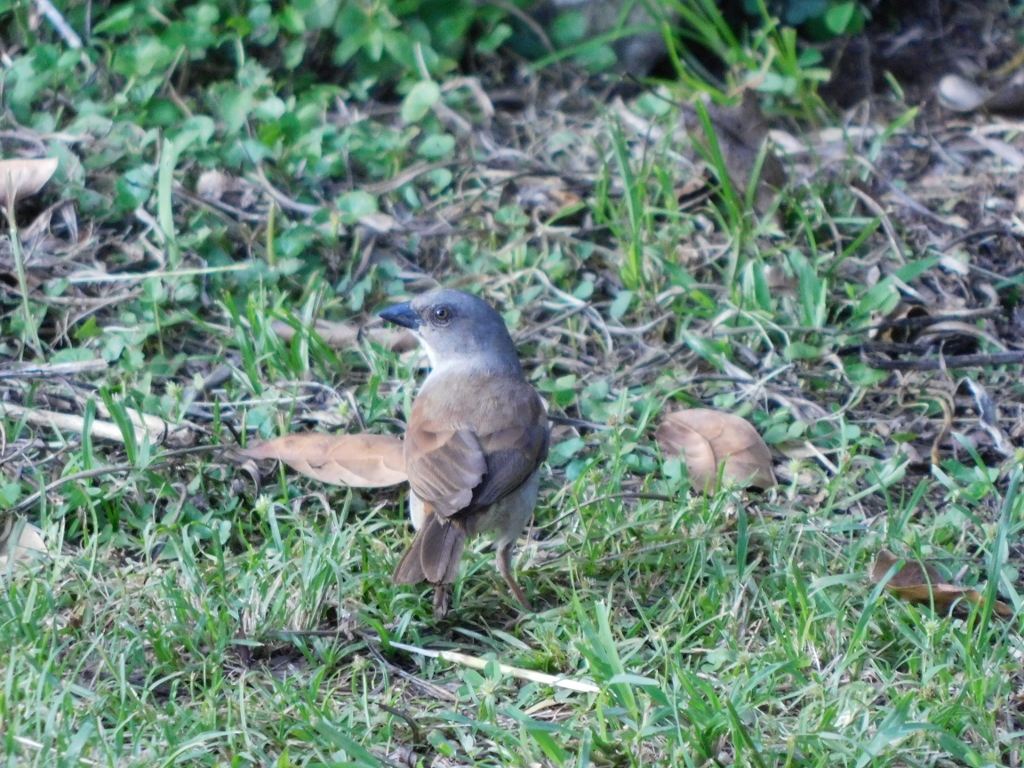 Grey-headed sparrow
Grey-headed sparrow
I found a pair of black-and-white-casqued hornbills particularly interesting, as they are very impressive when flying, but I wasn’t able to capture them at that moment. However, I did manage to record them in a video format. This is a monogamous species, with the female being smaller than the male and having a smaller casque on top of the bill. It’s almost touching to see how they take care of each other and I was partially able to capture that as well. My main challenge was the absence of a tripod and the significant zooming – I simply couldn’t steady the camera.
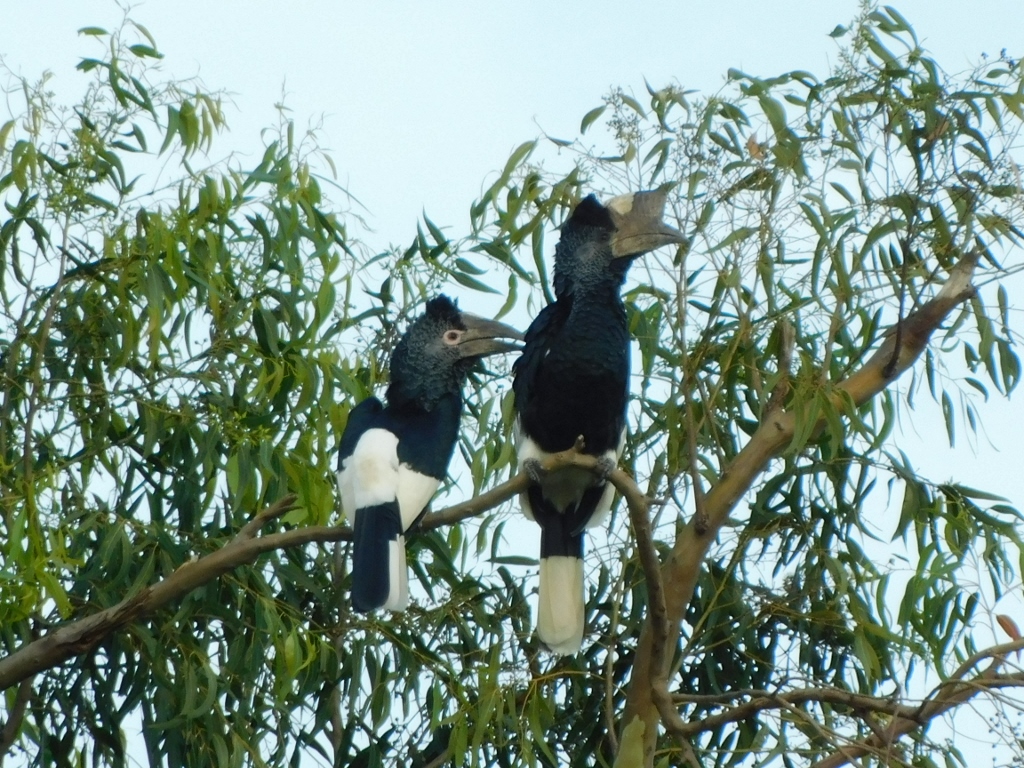 Black-and-white-casqued hornbill (Bycanistes subcylindricus)
Black-and-white-casqued hornbill (Bycanistes subcylindricus)
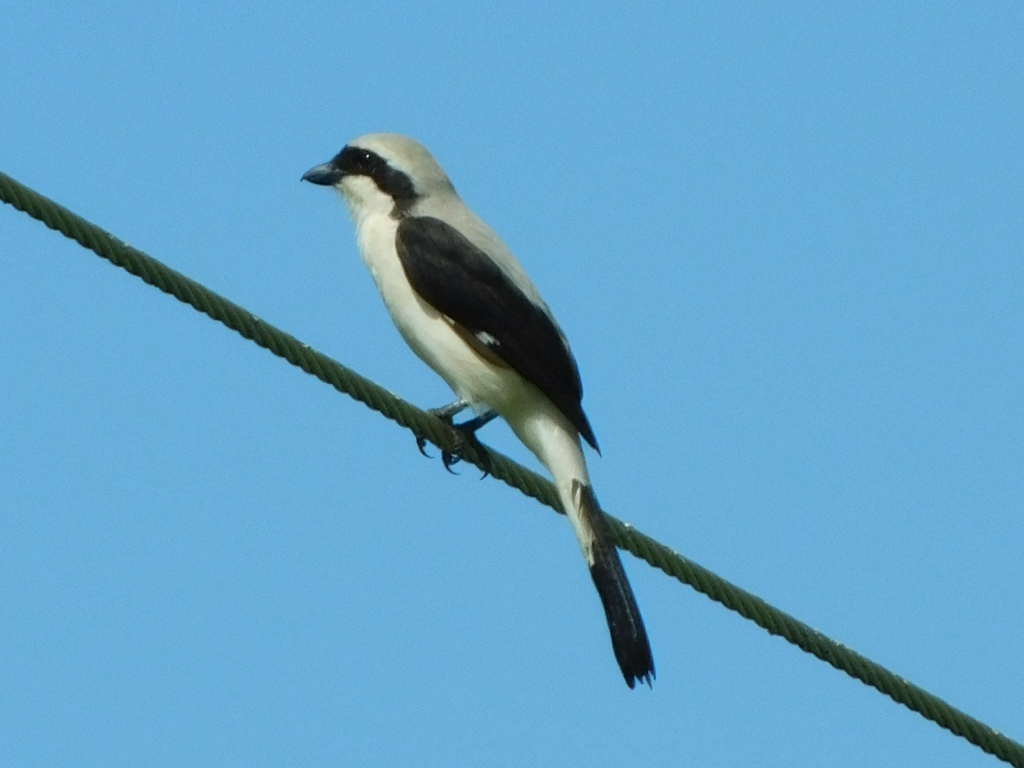 Grey-backed Fiscal (Lanius excubitoroides)
Grey-backed Fiscal (Lanius excubitoroides)
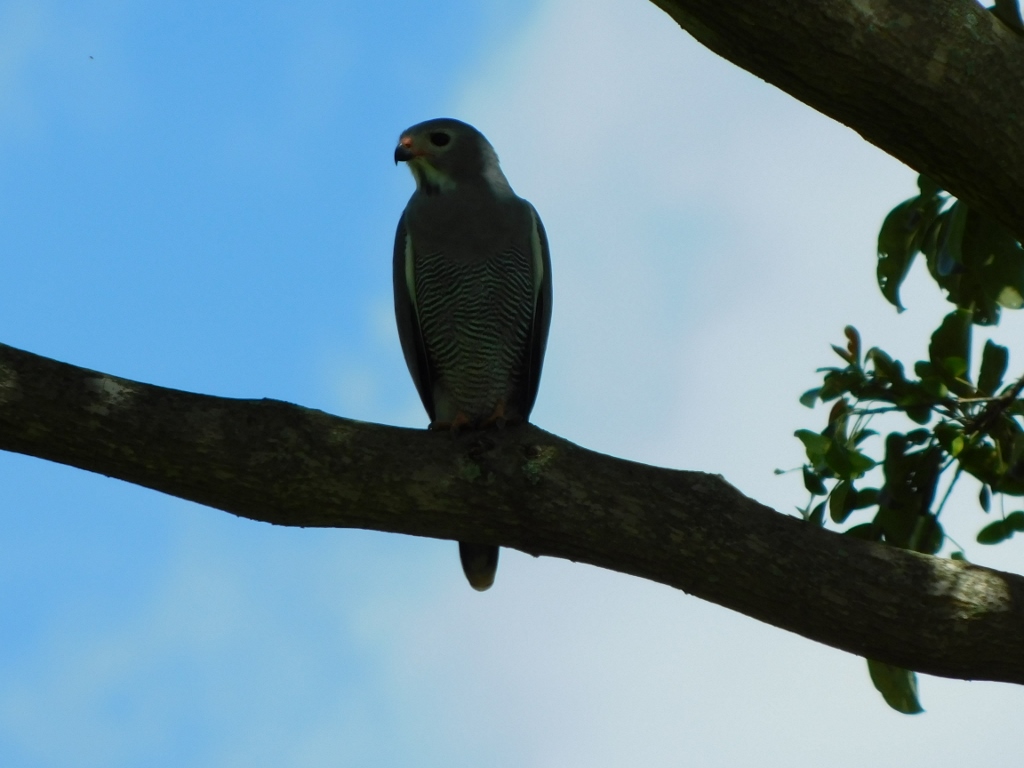 Lizard Buzzard (Kaupifalco monogrammicus)
Lizard Buzzard (Kaupifalco monogrammicus)
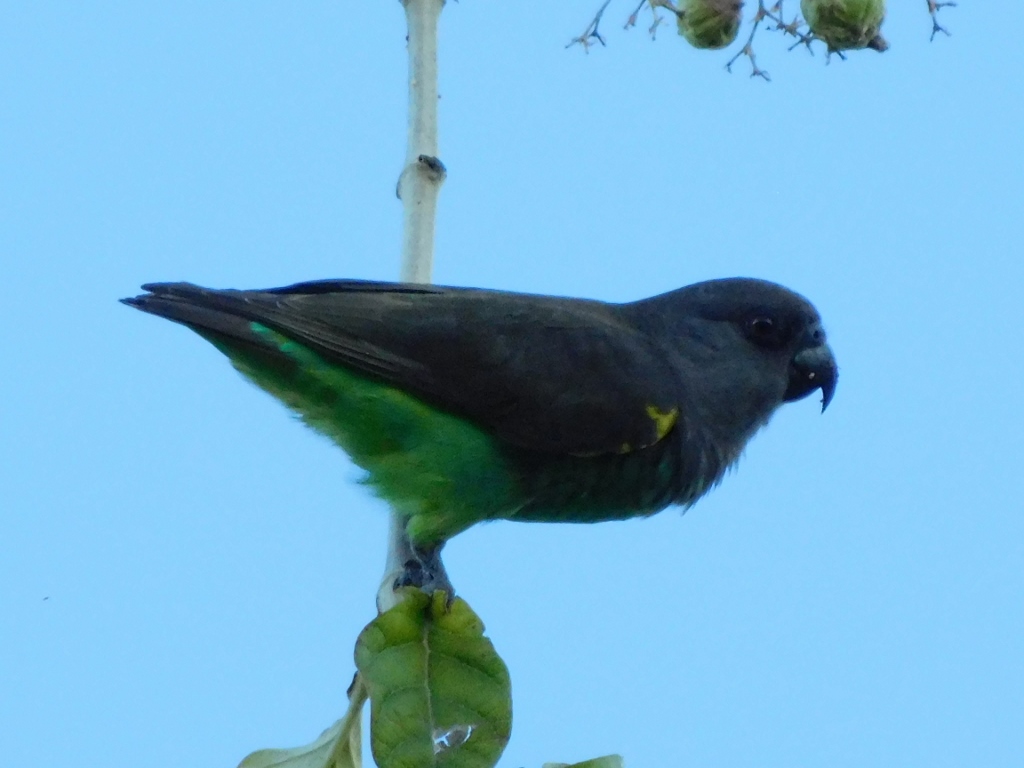 Meyer’s parrot (Poicephalus meyeri)
Meyer’s parrot (Poicephalus meyeri)
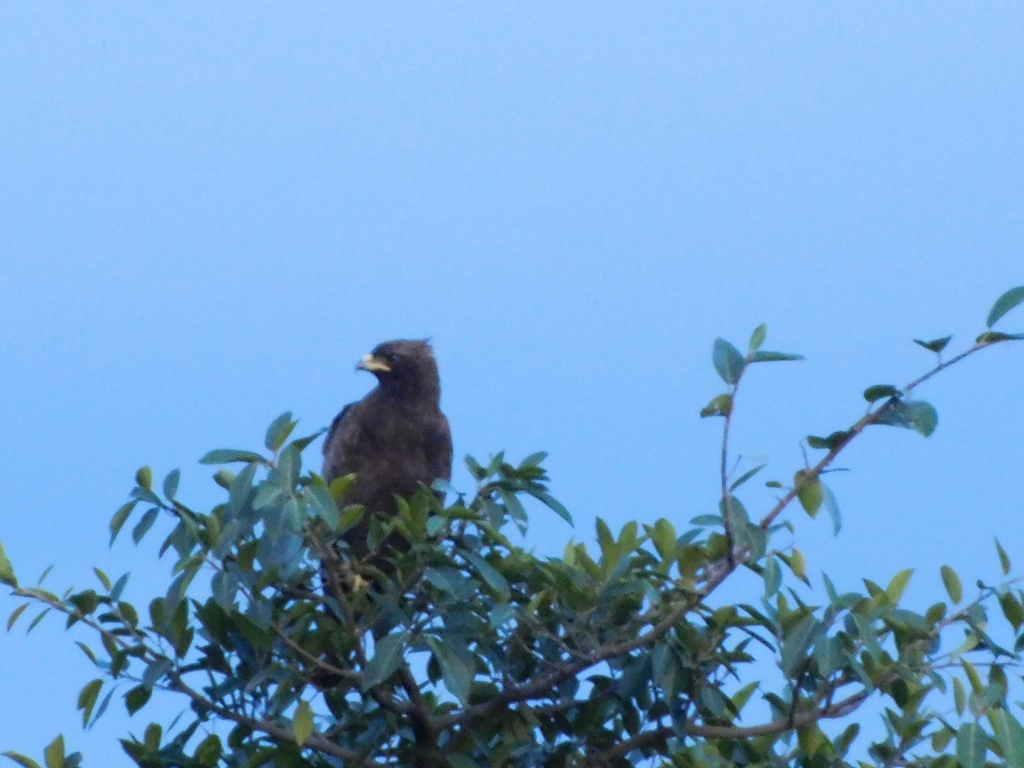 Wahlberg's eagle (Hieraaetus wahlbergi)
Wahlberg's eagle (Hieraaetus wahlbergi)
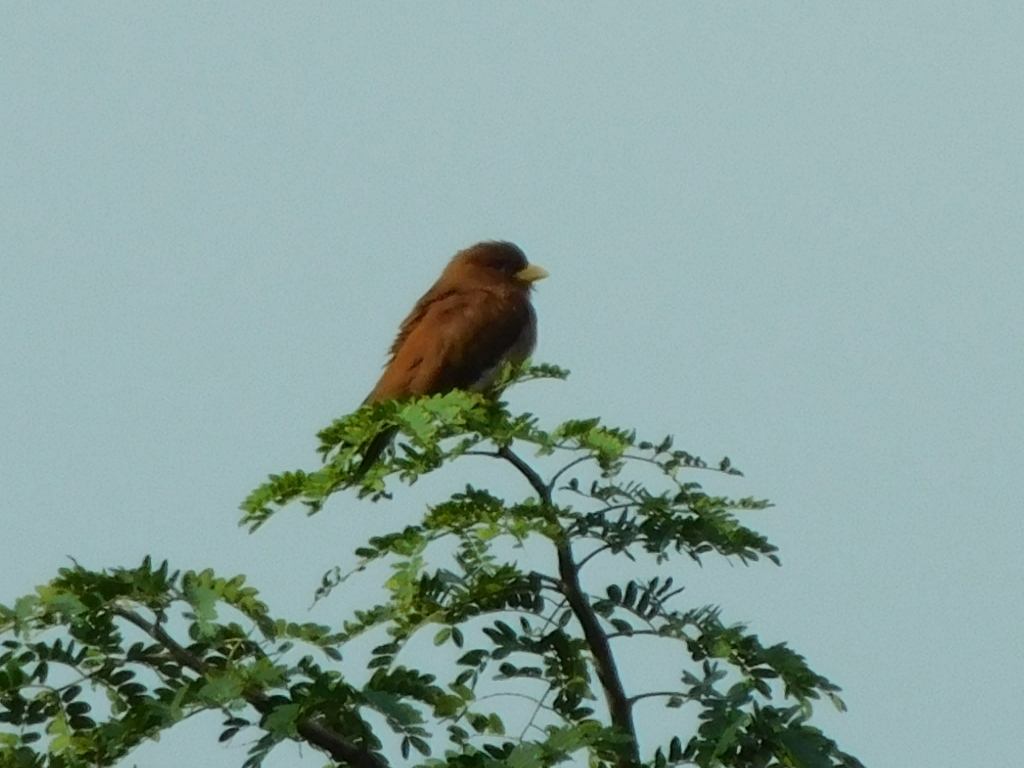 Broad-billed roller (Eurystomus glaucurus)
Broad-billed roller (Eurystomus glaucurus)
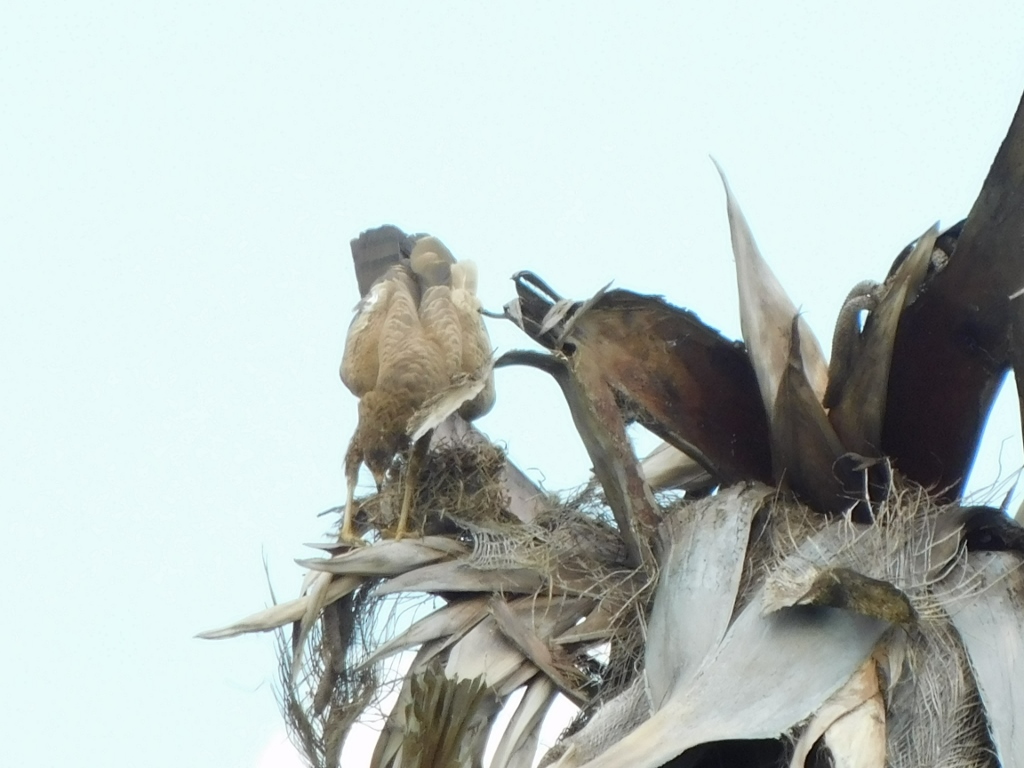 African Harrier-Hawk (Polyboroides typus)
African Harrier-Hawk (Polyboroides typus)
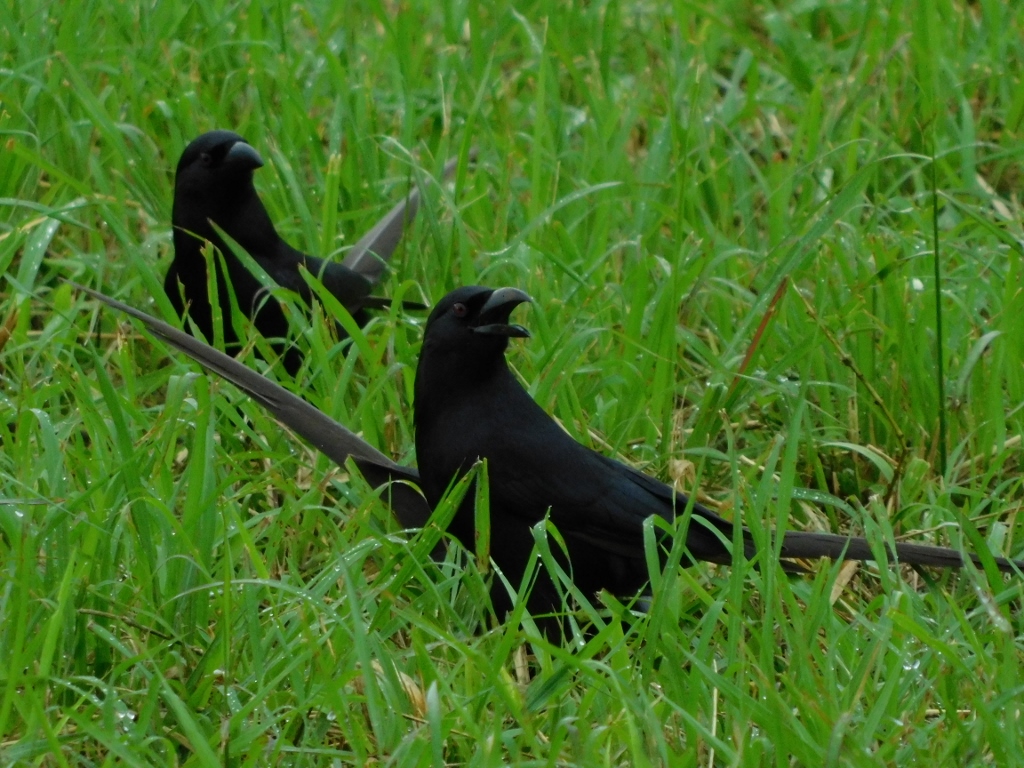 Piapiac (Ptilostomus afer)
Piapiac (Ptilostomus afer)
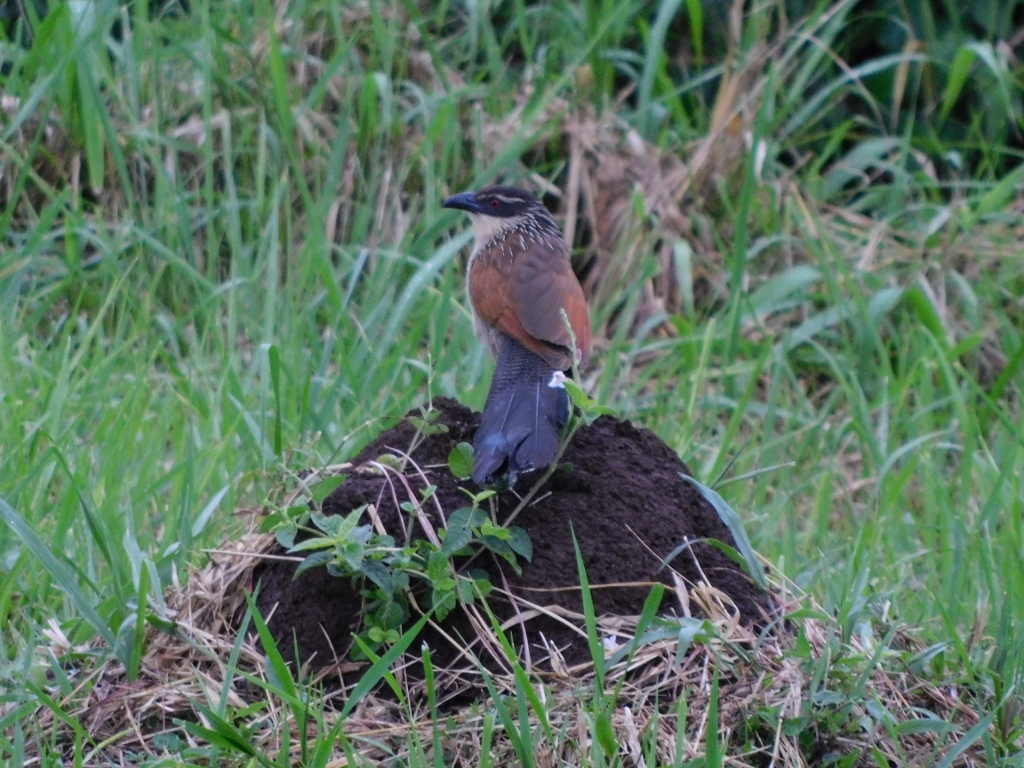 White-browed coucal (Centropus superciliosus)
White-browed coucal (Centropus superciliosus)
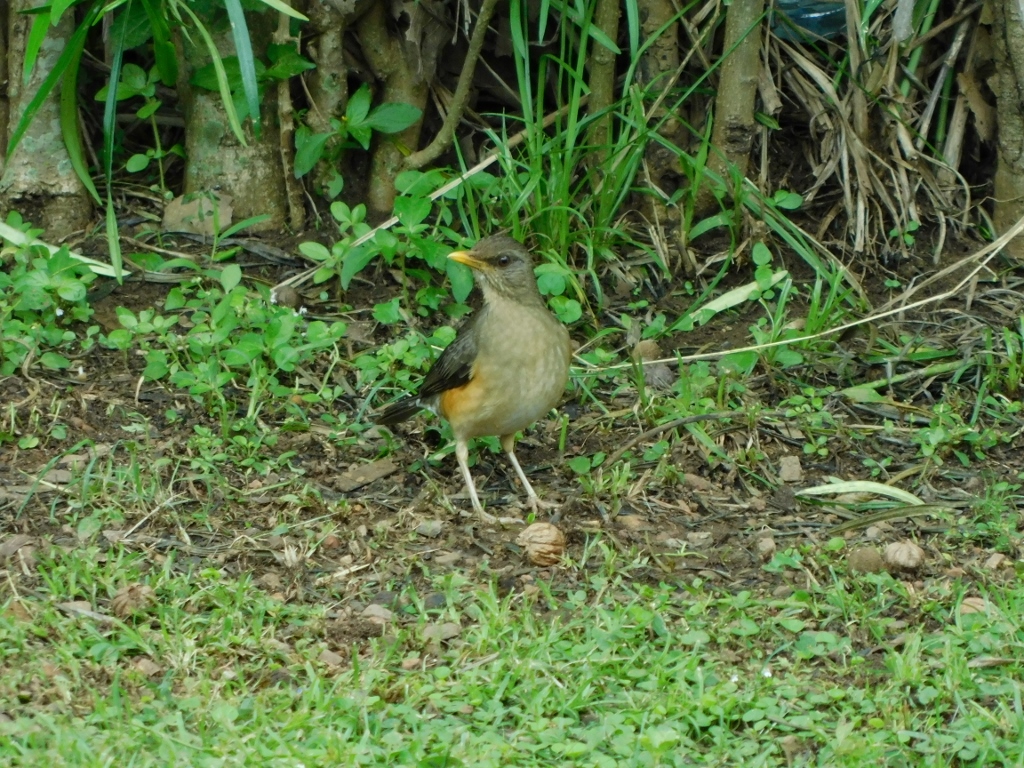 African thrush (Turdus pelios)
African thrush (Turdus pelios)
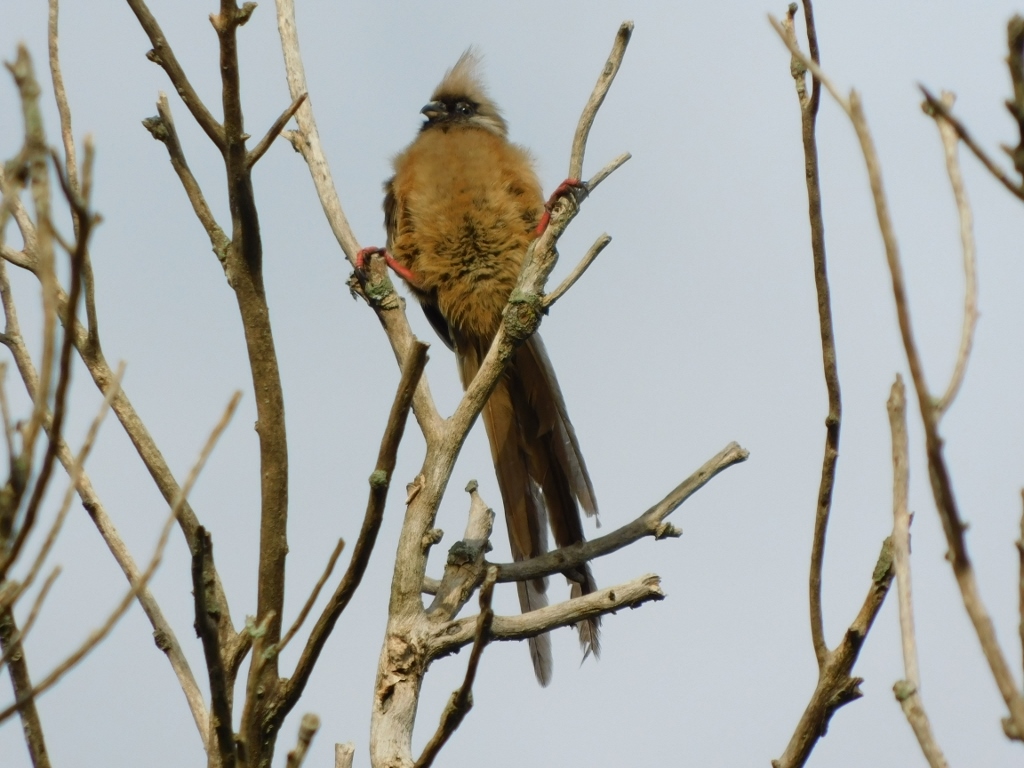 Speckled mousebird (Colius striatus)
Speckled mousebird (Colius striatus)
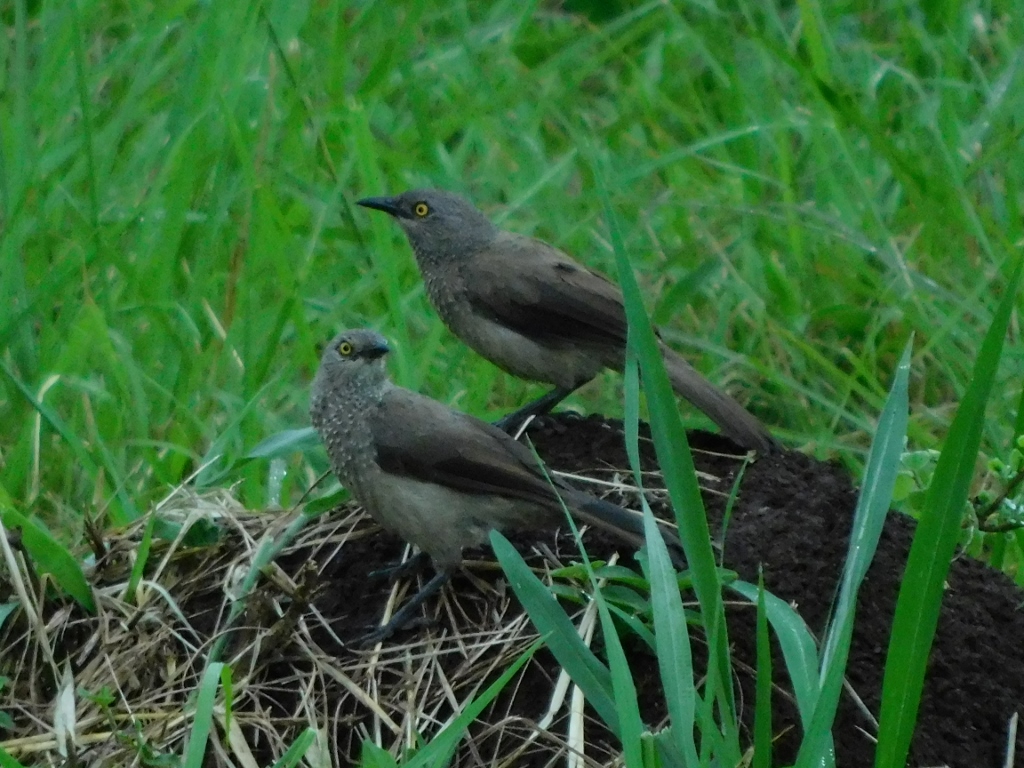 Brown Babbler (Turdoides plebejus)
Brown Babbler (Turdoides plebejus)
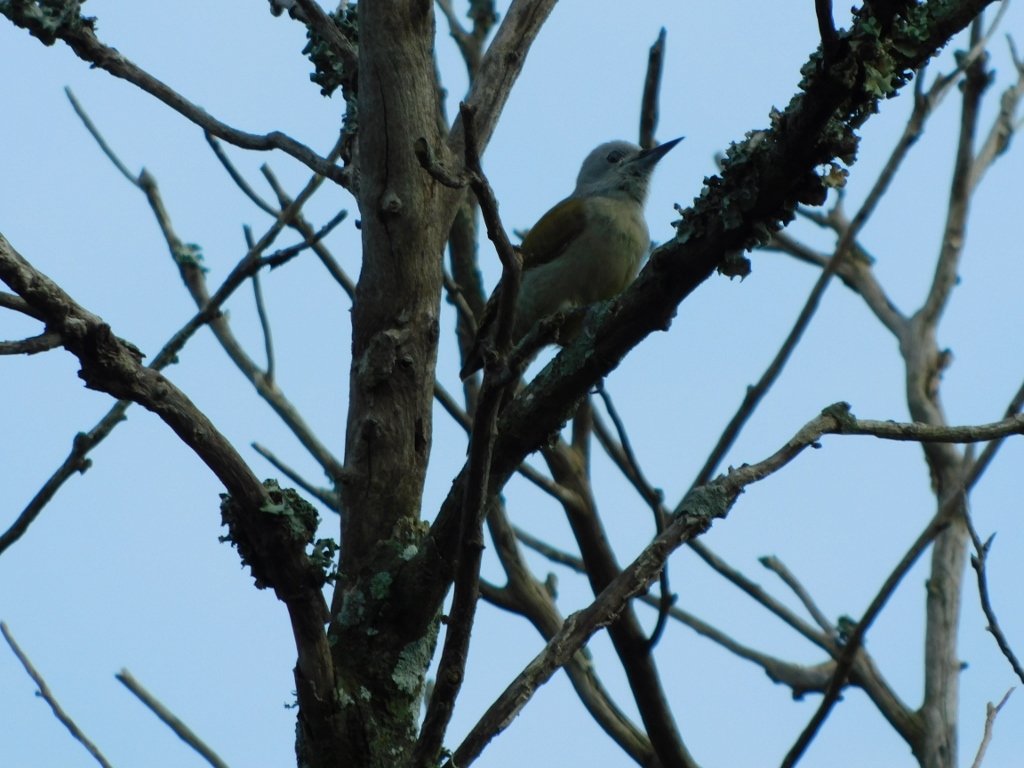 African grey woodpecker (Dendropicos goertae)
African grey woodpecker (Dendropicos goertae)
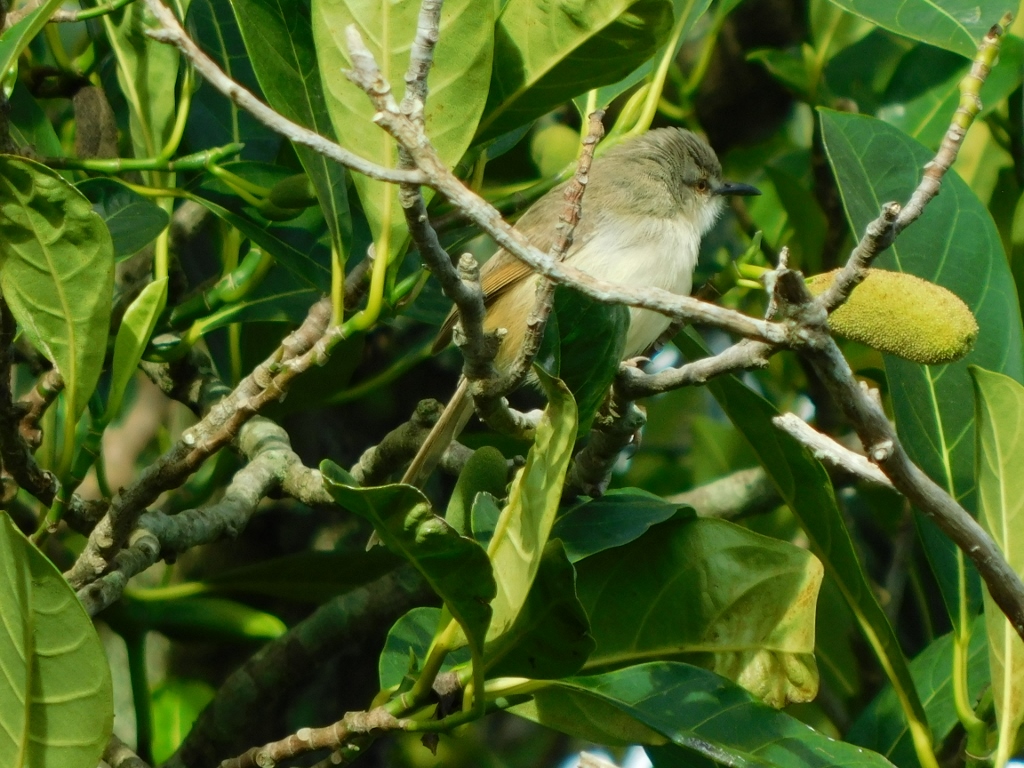 Tawny-flanked Prinia (Prinia subflava)
Tawny-flanked Prinia (Prinia subflava)
But in addition to the birds, I managed to see and take photos of some other animals and interesting plants in my immediate surroundings. For instance, a vervet monkey (Chlorocebus pygerythrus) that initially crossed the path near the house where I was staying. I then “chased” it in order to take photos of it. Along the way, I even managed to record it with a video camera and I finally caught up with it when it settled at the end of a branch.
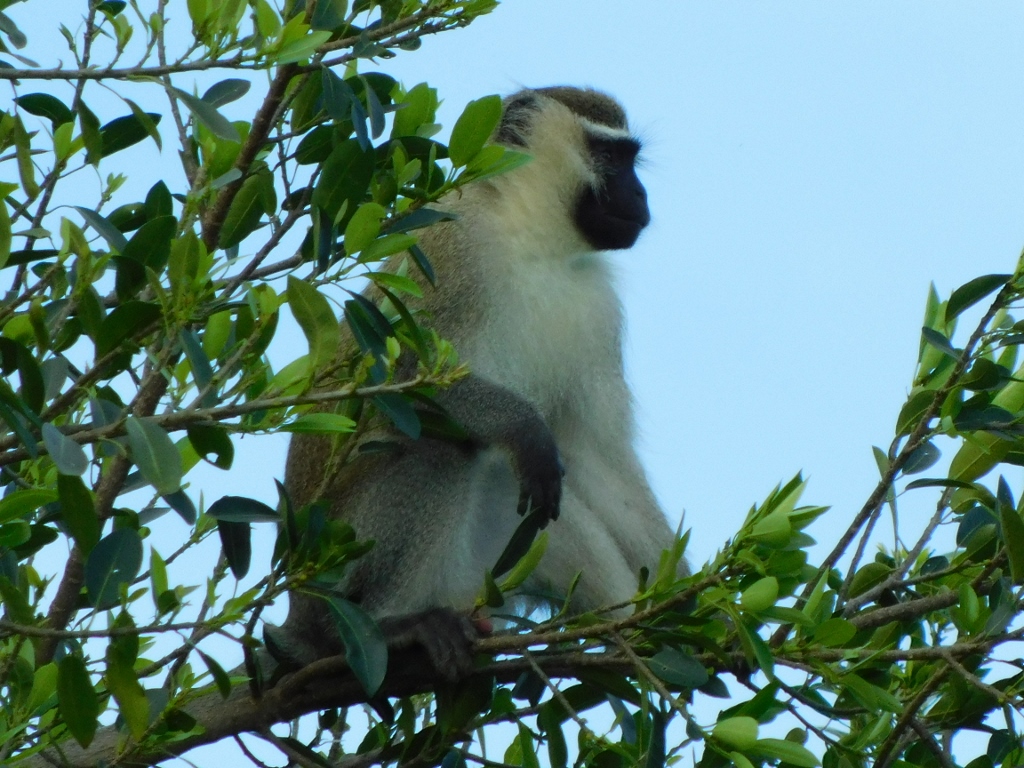 Vervet monkey
Vervet monkey
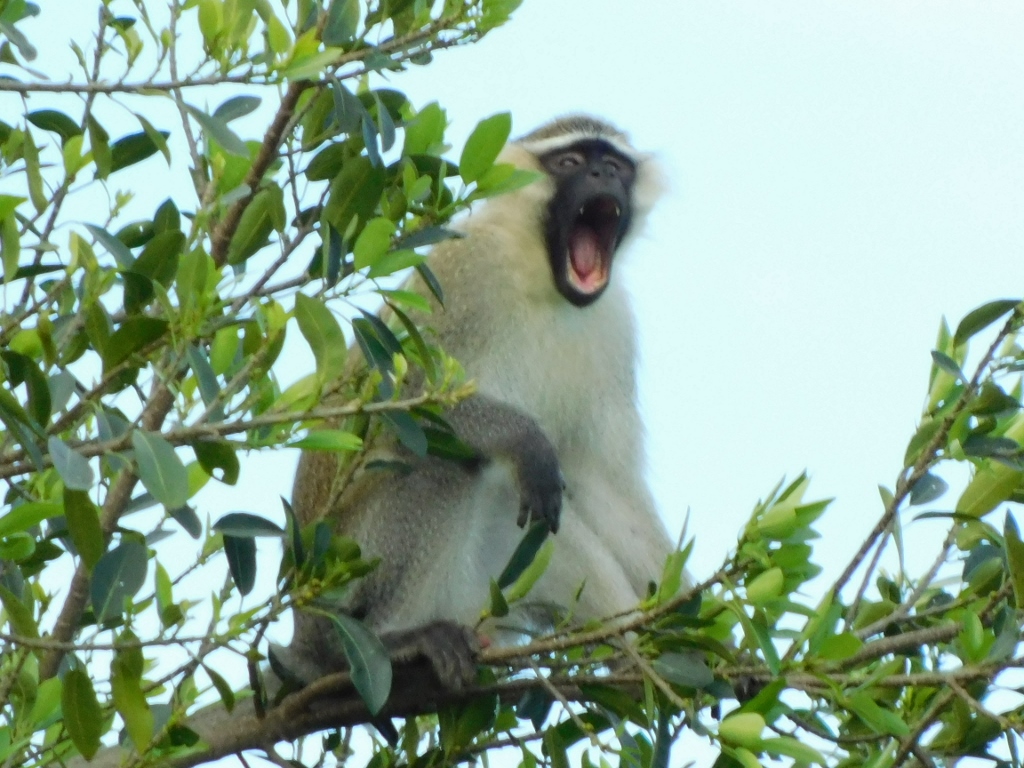 Vervet monkey
Vervet monkey
There were also small creatures I encountered in my room and bathroom. Of course, geckos were the most common, but I didn’t even bother taking photos of them. Instead, here is a tiny frog (less than 2 cm) that somehow found its way into my room and the same goes for an antlion (from the Myrmeleontidae family).
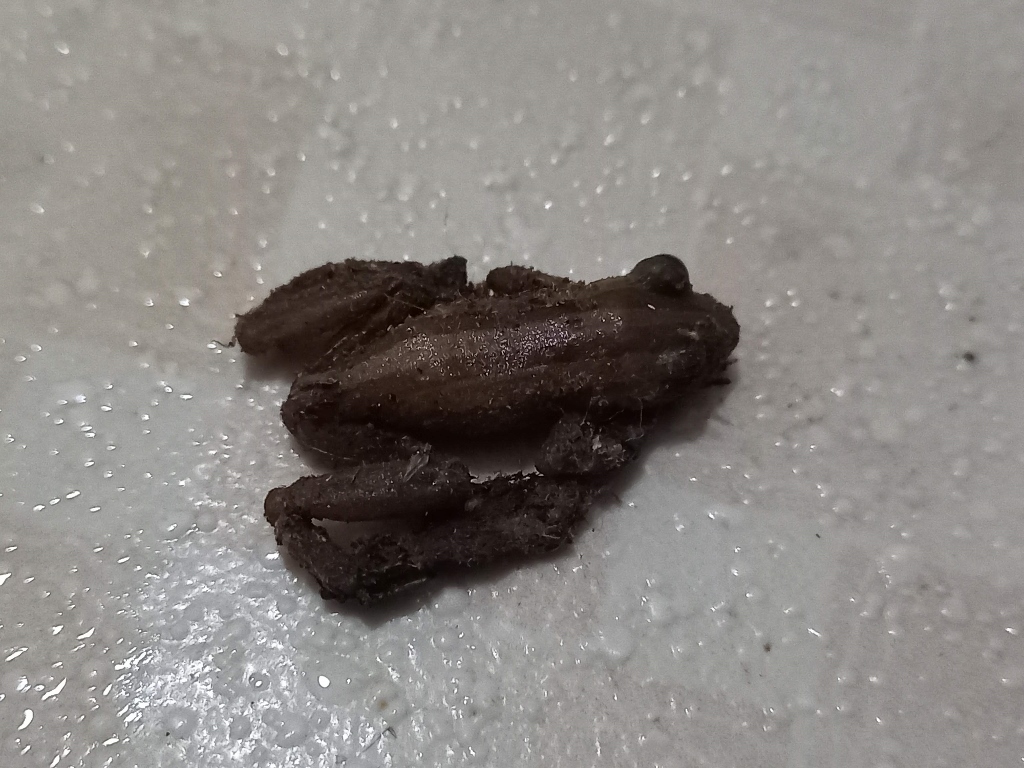 Miniature frog
Miniature frog
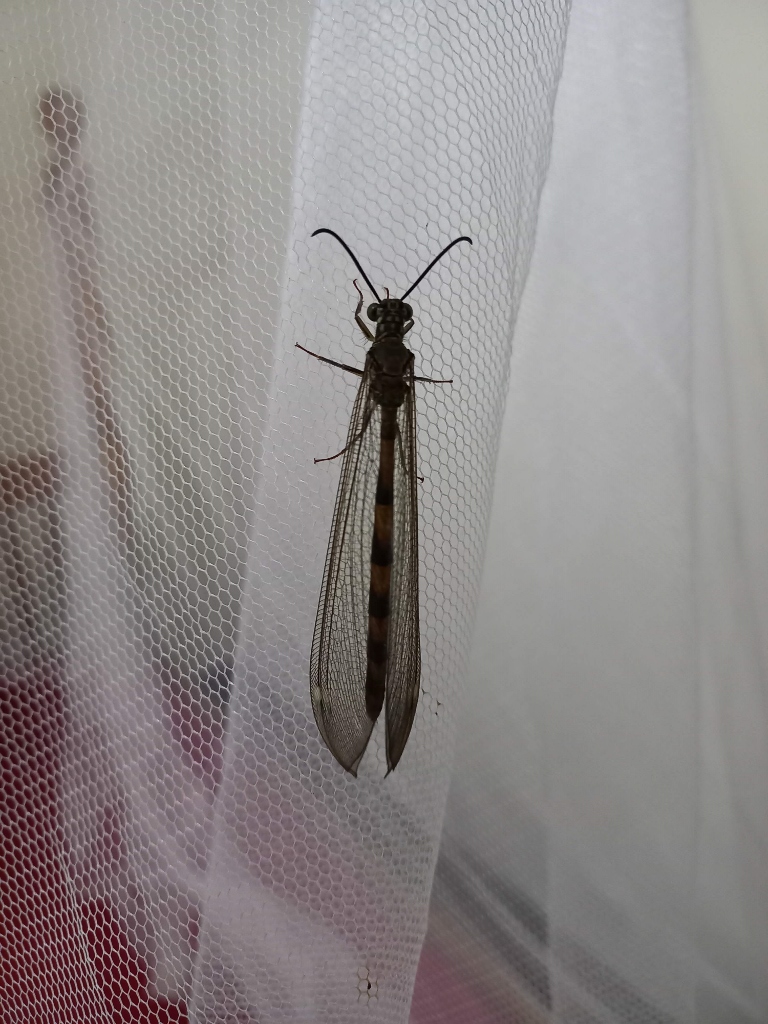 Antlion
Antlion
Speaking of insects, here are a couple of photos more. The first one shows termites and their queen, while the second one features a butterfly from the Afrotropical region, soldier pansy, (Junonia terea).
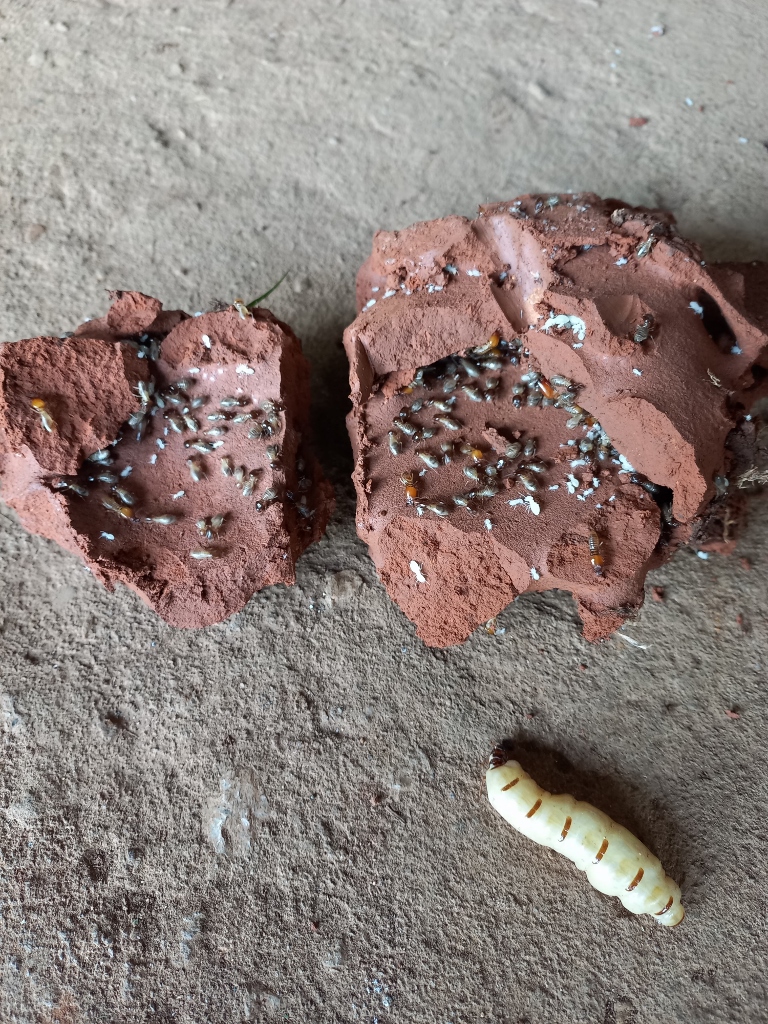 Termites and their queen
Termites and their queen
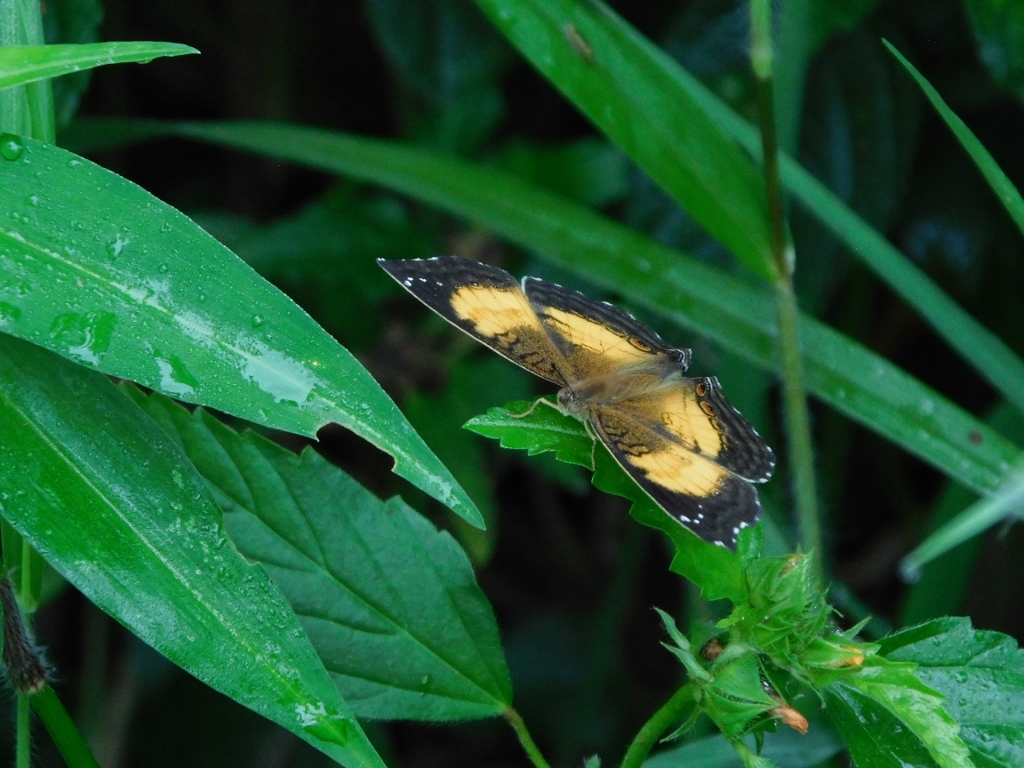 Soldier pansy
Soldier pansy
But there were also wonderful domestic animals. For instance, a beautiful mother goat and her hungry kids.
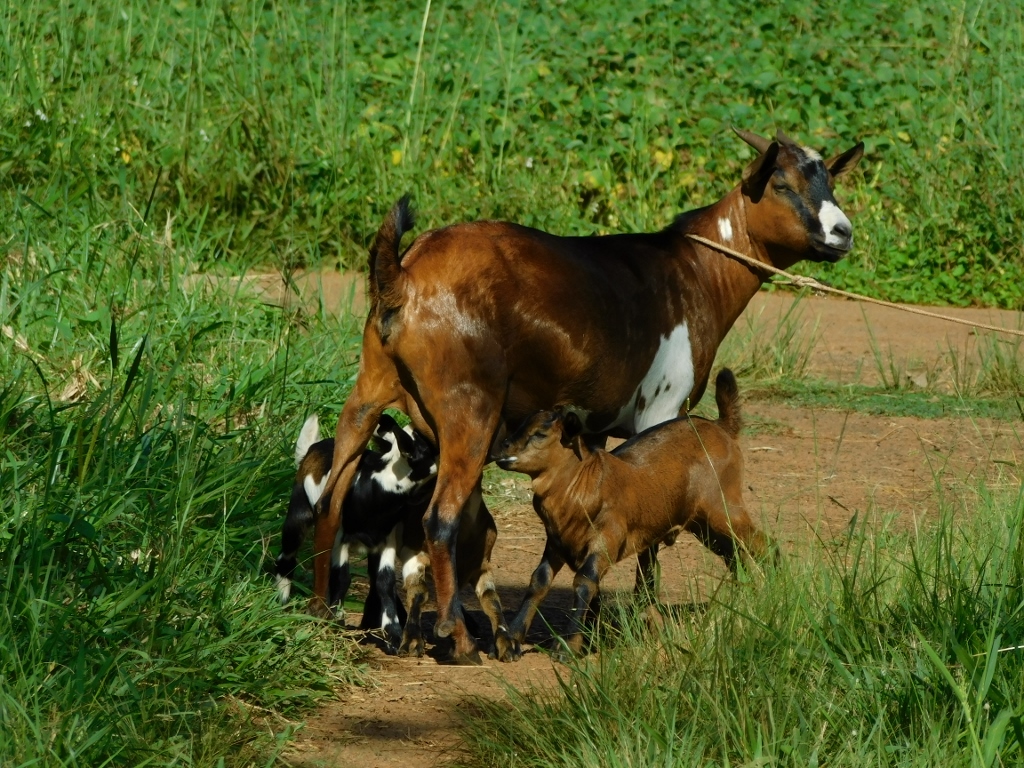 A goat and her kids
A goat and her kids
I also occasionally indulged in photographing interesting plants. Dealing with them was easy – they didn’t move.
For instance, there was a small field of peanuts (groundnuts). With regards to this plant it is always interesting to say that peanut is a herbaceous plant and it is its seeds that grow underground in pods that are used in human consumption. What is interesting is that although there is a “nut” in the name of this plant, it is in fact not a nut at all, but a legume.
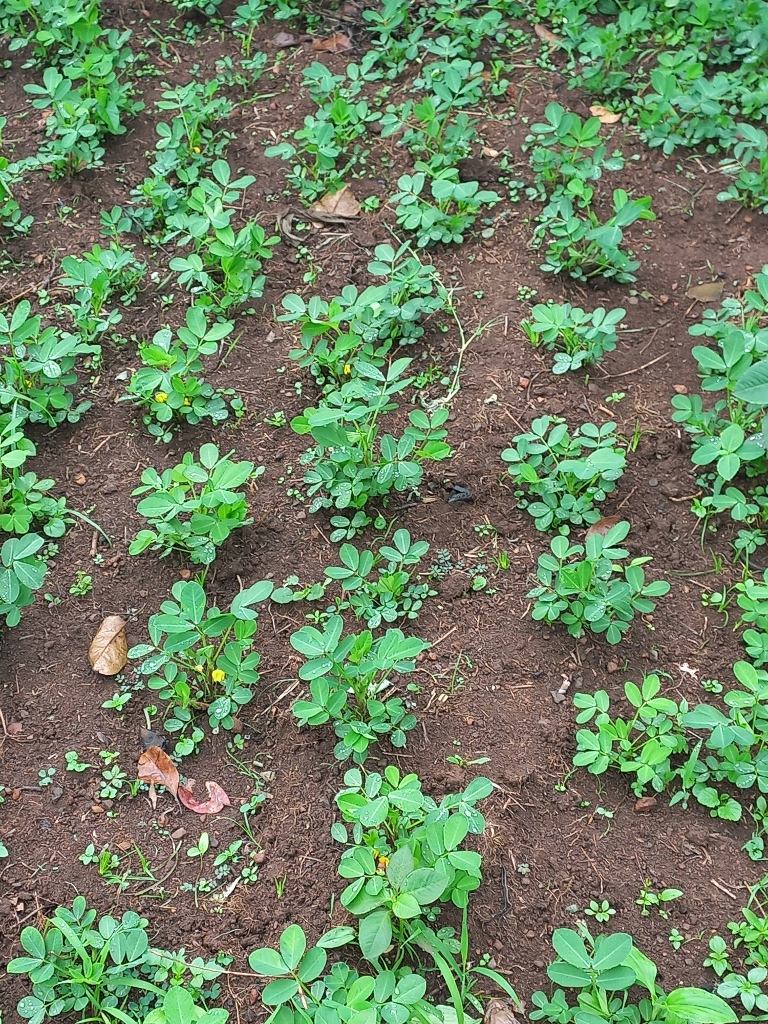 Peanut/groundnut field
Peanut/groundnut field
I also love it when I have the opportunity to “get to know” a new and interesting plant. For example, bitter apple (Solanum incanum) that can be seen in the photo below. This plant is interesting as the distant ancestor of the aubergine, as it is believed that the aubergine was developed as a domestic variety directly from this wild plant.
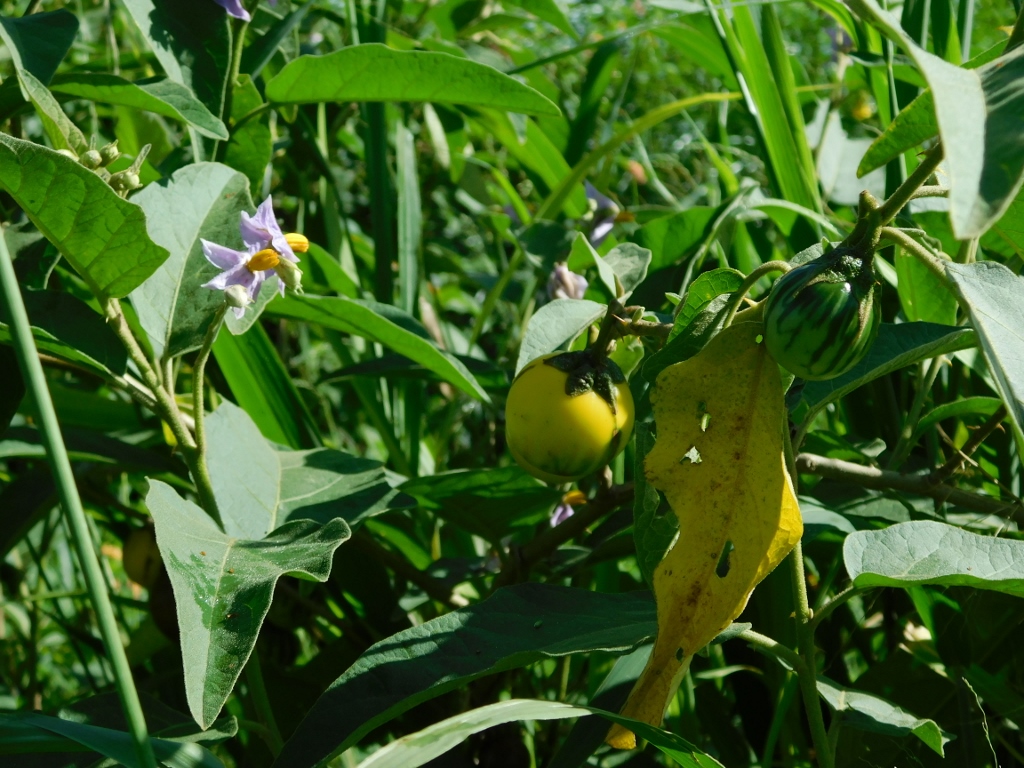 Bitter apple
Bitter apple
As for sightseeing, one afternoon I had a few hours free, so I went for a leisurely walk around Masindi with Susan, a wonderful woman who was our host. There is a walking tour of this town that was once designed by a group of some volunteers. Susan is extremely kind and a very pleasant person, so we had a great time chatting and laughing along the way. It was interesting for her that someone from another continent had come to guide her through the town where she lives and works, but that often happens. I believe there are tourists who know some parts of Belgrade better than I do. It’s entirely normal as people who live and WORK in certain places spend most of their time on the job, while the rest of the time they relax or engage in shopping and similar activities.
So, the two of us first went to the New Court View hotel, where we received a leaflet with a map and the suggested route for the tour. We practically started from the centre, passing through it on the way to the first important landmark.
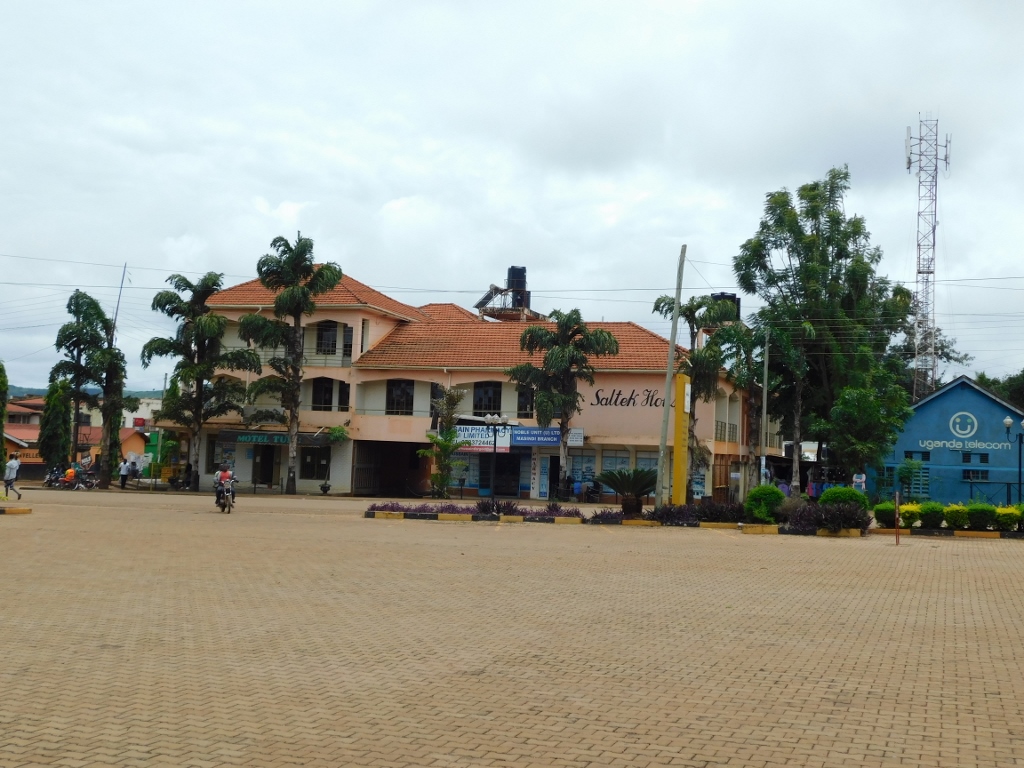 Masindi, a detail
Masindi, a detail
Masindi is the second-largest city in the Bunyoro sub-region located in western Uganda, situated at an average elevation of 1227 meters. In 2014, it had around 94,000 inhabitants, but it is estimated that by 2020, the city’s population had well exceeded 110,000.
The city centre consists of streets that, although paved, are covered in red dust originating from the prevalent soil in this region. There are also green areas in the city, such as the first significant landmark that Susan and I went to see.
This landmark is the Stadium in the heart of the city, which, besides being used for football, also hosts all significant events in the city.
 City stadium in Masindi
City stadium in Masindi
Then Susan and I wandered into the central streets of Masindi.
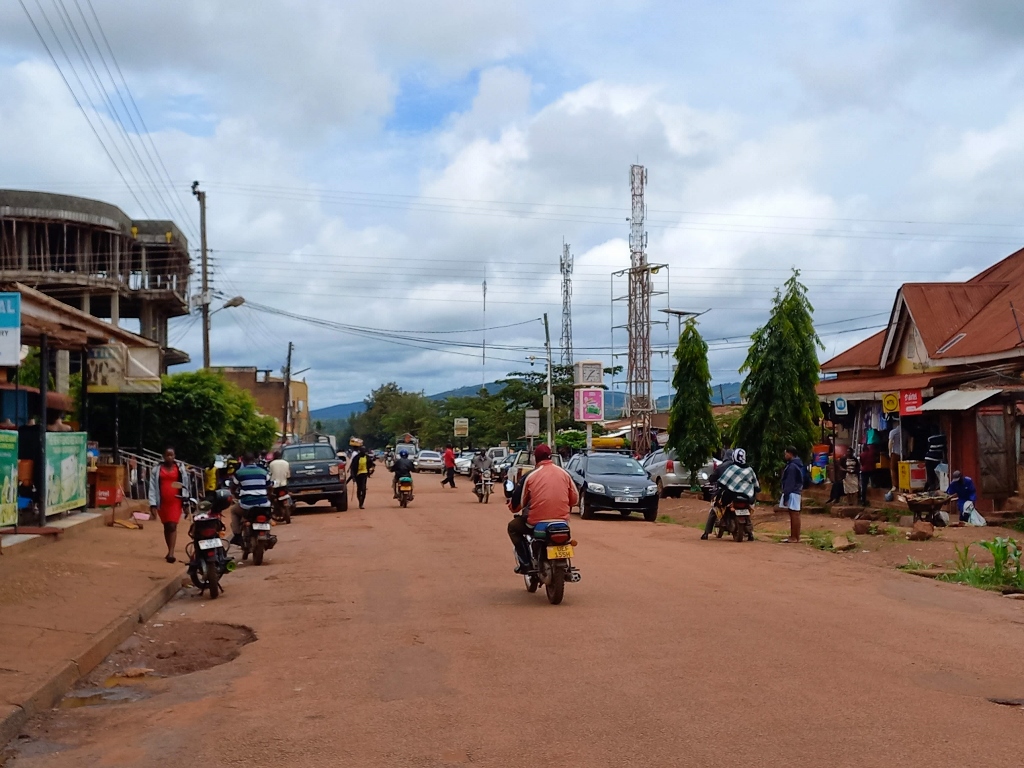 Masindi, a detail
Masindi, a detail
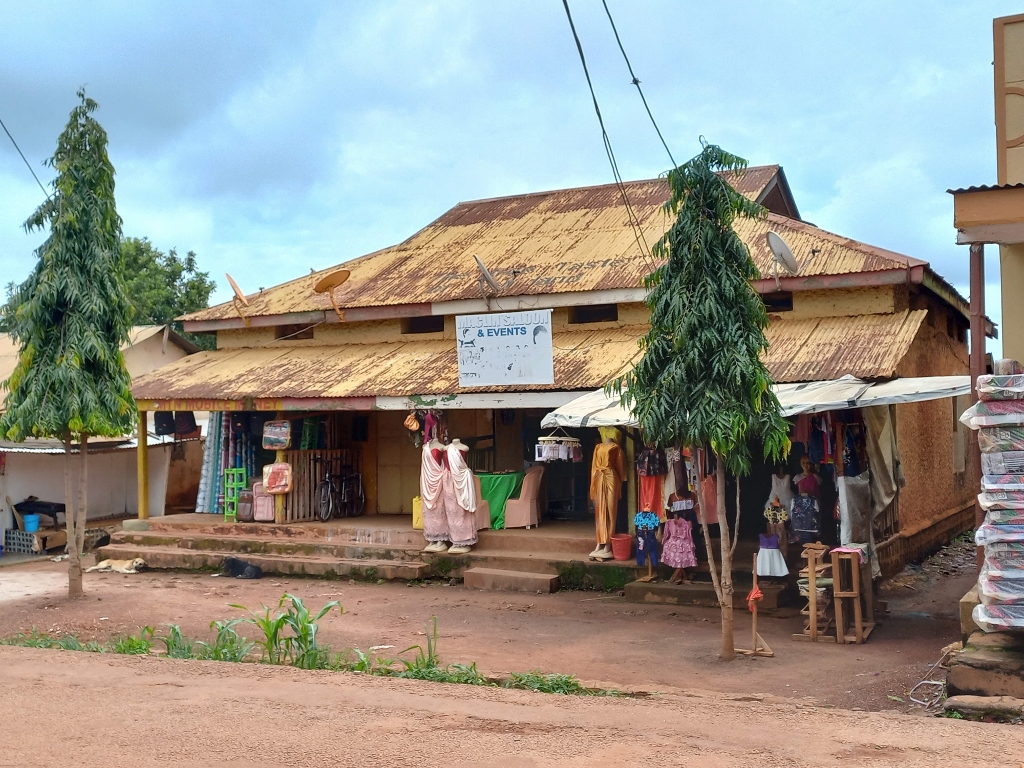 Masindi, a detail
Masindi, a detail
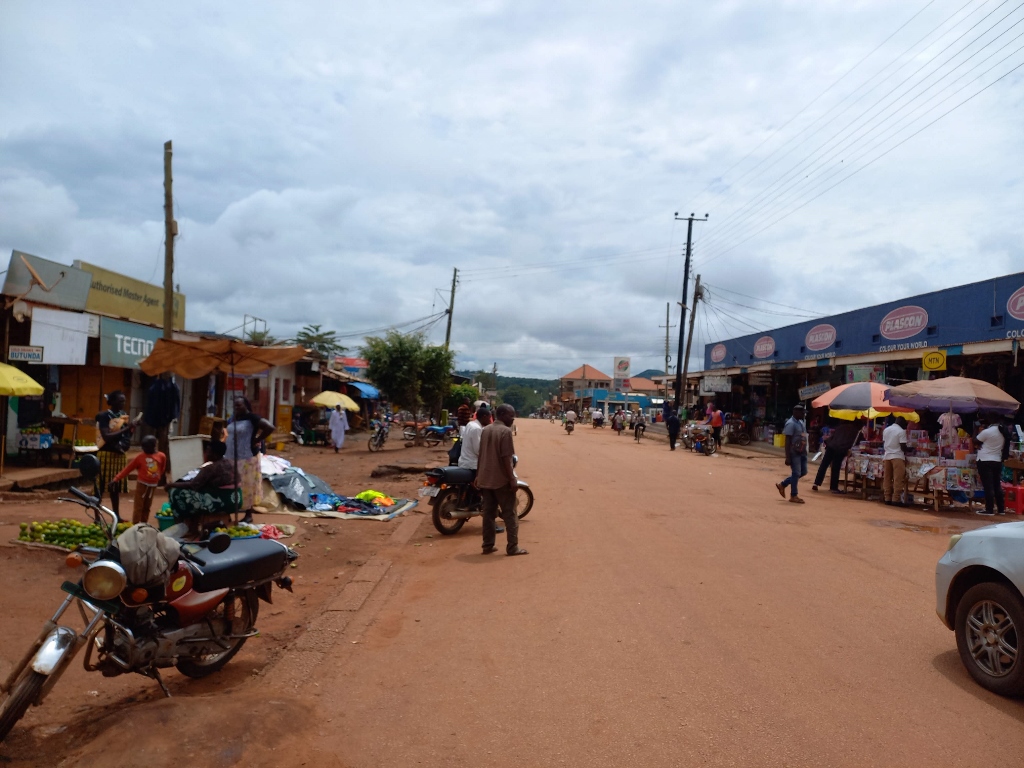 Masindi, a detail
Masindi, a detail
It is clear that this is also the commercial part of the city and there’s a market here, too. However, I postponed my visit to the market for some other time. For now, we just walked past one of the entrances to the market. The leaflet guide suggests that the best time to visit the market is after 5:30 PM, as that is the time when it is most active. I actually came here a couple of times and once it was precisely around that time. But, more about it later on...
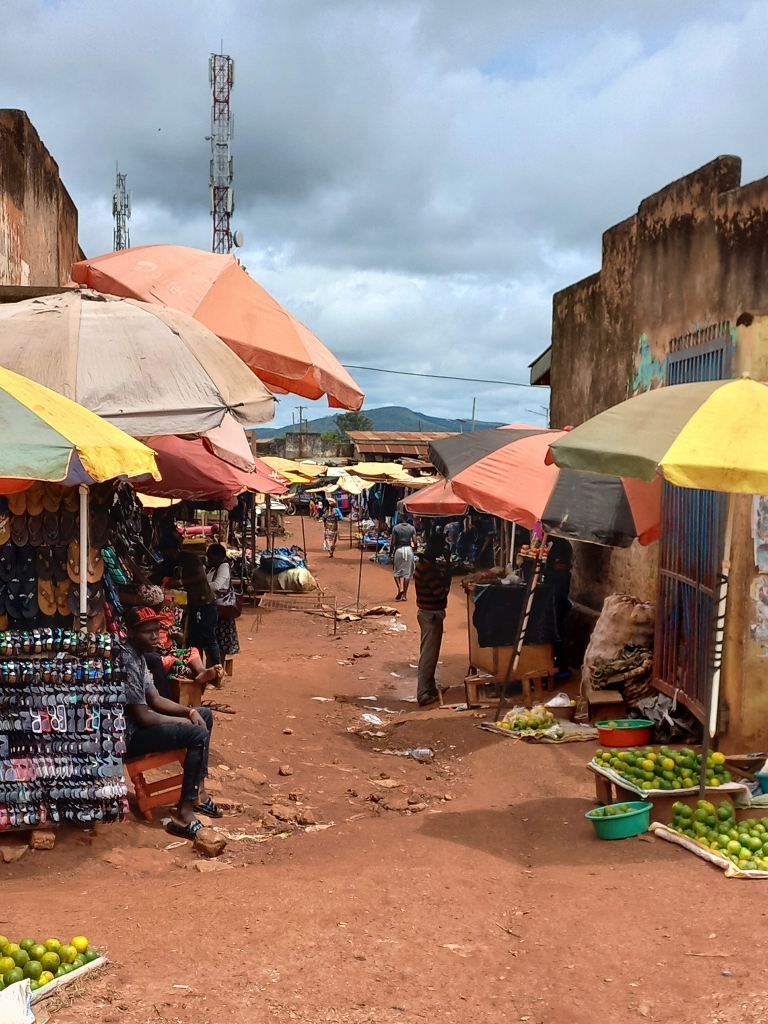 One of the entrances to the market
One of the entrances to the market
During this walk, Susan and I went to Masindi Public School. The building was rented for the school’s needs in 1954, catering to children from the then-large Indian community living here. The times and circumstances have changed and today there are no Indian children, but the school remains very active. I made an effort to capture the school building when the children weren’t in sight, but their chatter and songs could be heard clearly while I was taking photos.
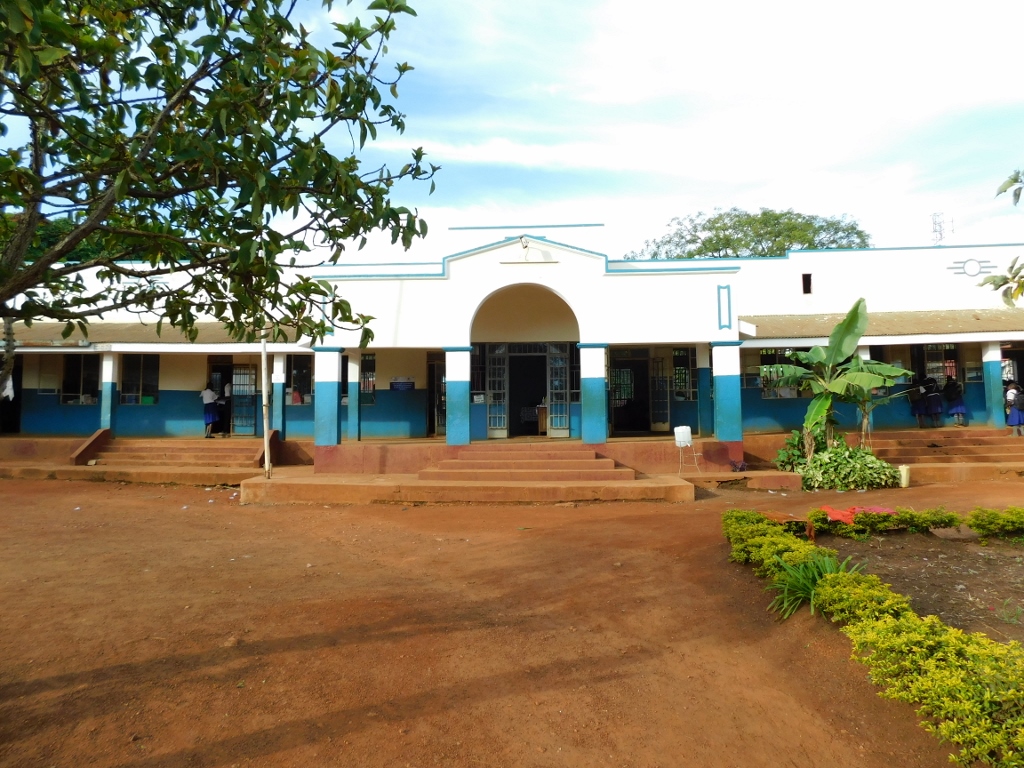 Masindi Public School
Masindi Public School
This may seem like an insignificant detail at first glance and some local school might seem unimportant to be a notable landmark. However, from examples in my own country, I’ve come to understand how something we take for granted today, such as education, is actually a crucial aspect for a nation. I often tell those willing to listen that education, seen through academic success, is the only legal way we can change our economic standing. Granted, both my perspective and my view of society belong to a bygone era. Today, there are still legal ways for a person to economically advance without being highly educated. However, these are relatively rare examples, so I stick to my stance, no matter how archaic it may seem.
The same can be said for healthcare – at least basic medical care is considered a normal occurrence in most developed countries today, but it requires effort, money, education and perseverance. In terms of importance for this part of Uganda, the next destination in our tour was the hospital. Admittedly, we only walked past the fence, but I did manage to capture something.
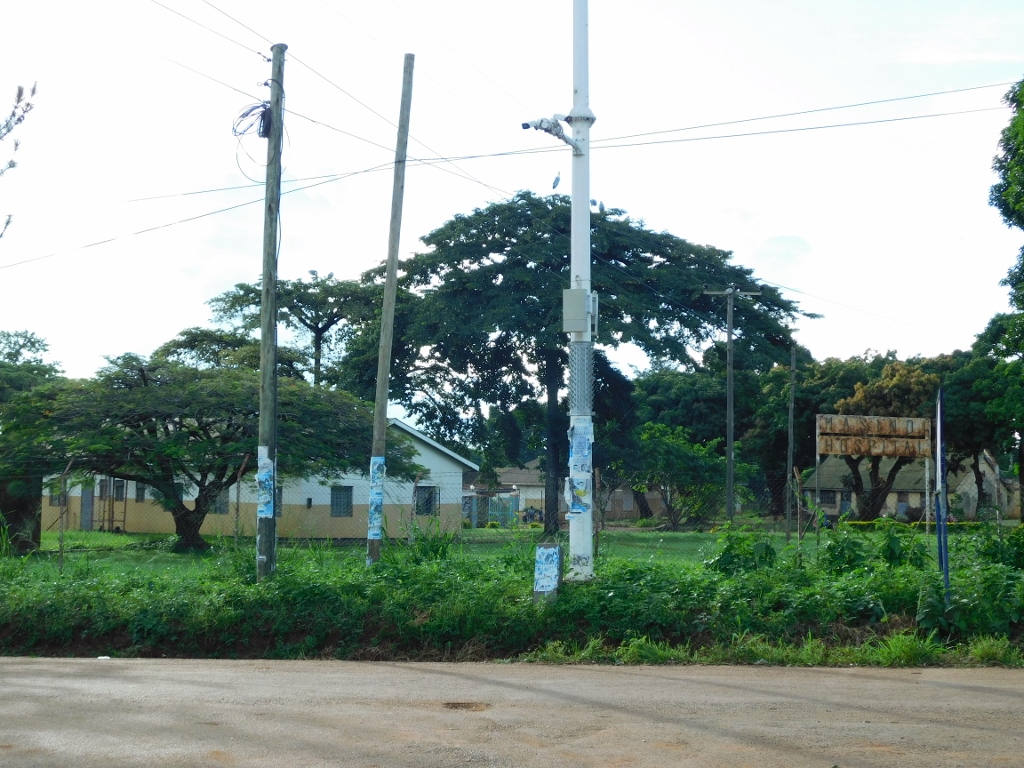 Masindi Hospital
Masindi Hospital
The hospital was established in the third decade of the 20th century as a clinic for workers employed by the Uganda Railway. Today, it provides healthcare services to the population of Masindi and its surroundings.
Both of these institutions I have previously mentioned are tied to the period when Uganda was a protectorate of the British Empire. In administrative terms, a protectorate was a slightly better version of subordination compared to a colony (for instance, in the case of neighbouring Kenya). In practical terms, in my opinion, it was essentially the same.
All in all, the Uganda Railway was a British state-owned railway company established in the late 19th century, inheriting the Imperial British East Africa Company. The railway was constructed in order to connect these inland areas of Africa with the East African coast and almost all the workers who laboured on its construction came from British India. In order to obtain cheap labour, the British devised “indentured labour contracts” and through this system some 32,000 workers were brought to East Africa in the late 19th century (for more on this system, see: https://www.svudapodji.com/en/mauritius-5/). This also explains why a school for the children of the Indian community was needed.
As for the British, Uganda gained independence in 1962, with Queen Elizabeth II still serving as the ruler as the Queen of Uganda. In October 1963, Uganda became a republic, but remained a member of the British Commonwealth of Nations.
Some of the British individuals who lived here also passed away in Masindi and were buried here. The European Cemetery was the next destination for Susan and I.
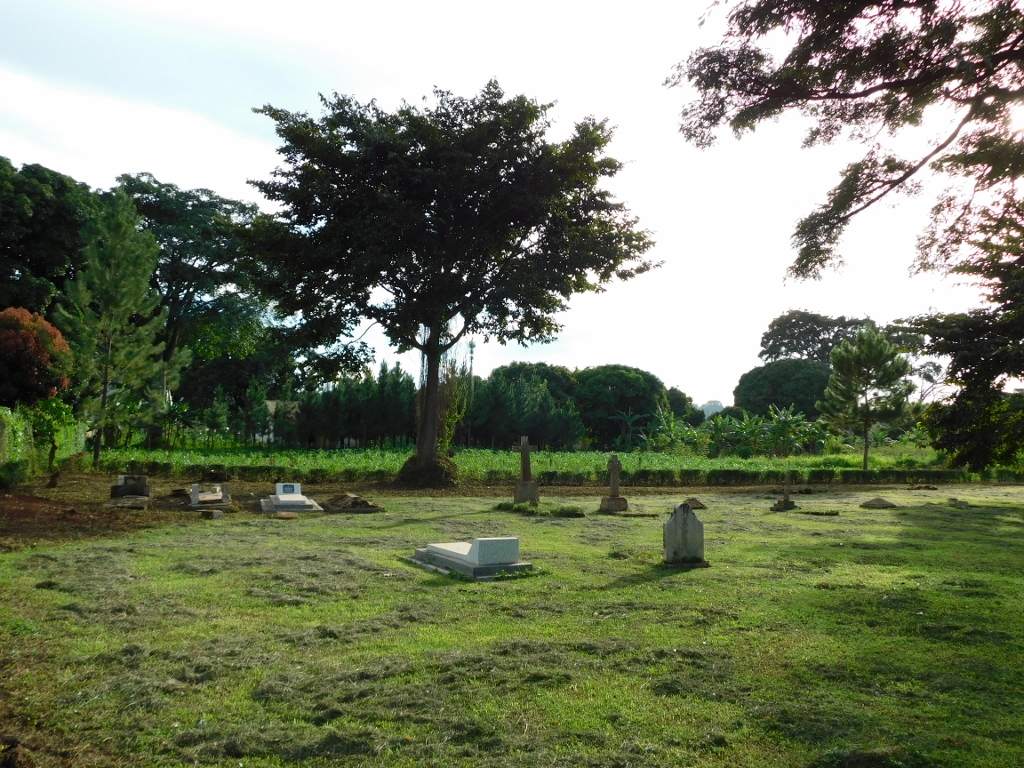 European Cemetery in Masindi
European Cemetery in Masindi
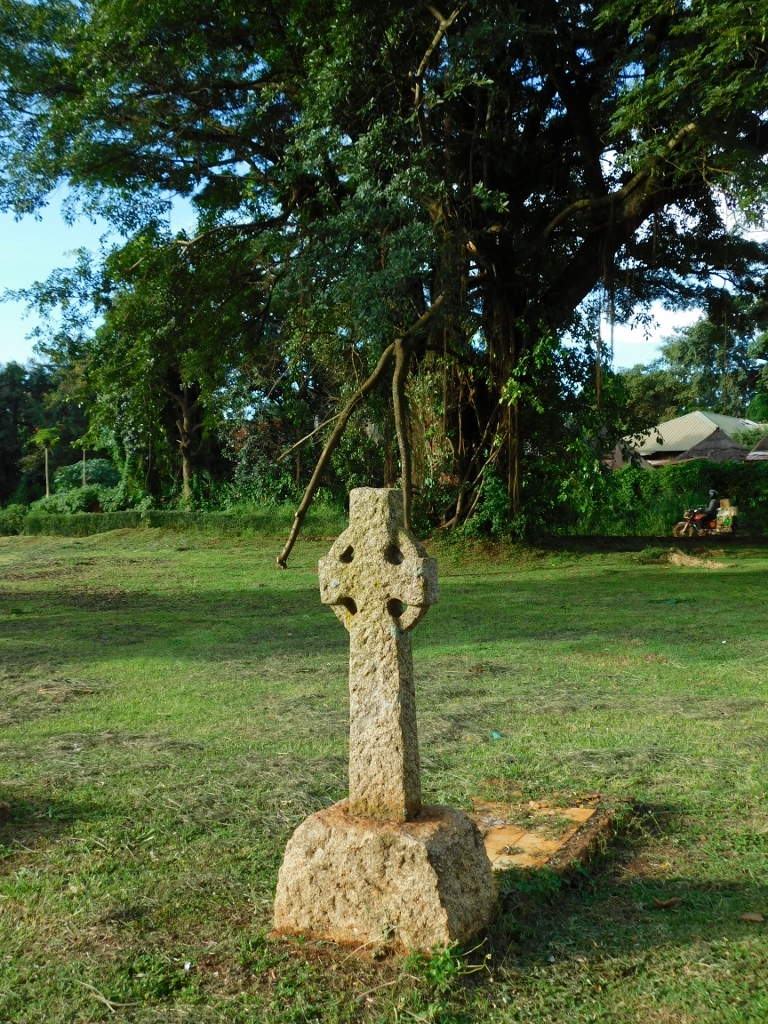 European Cemetery in Masindi
European Cemetery in Masindi
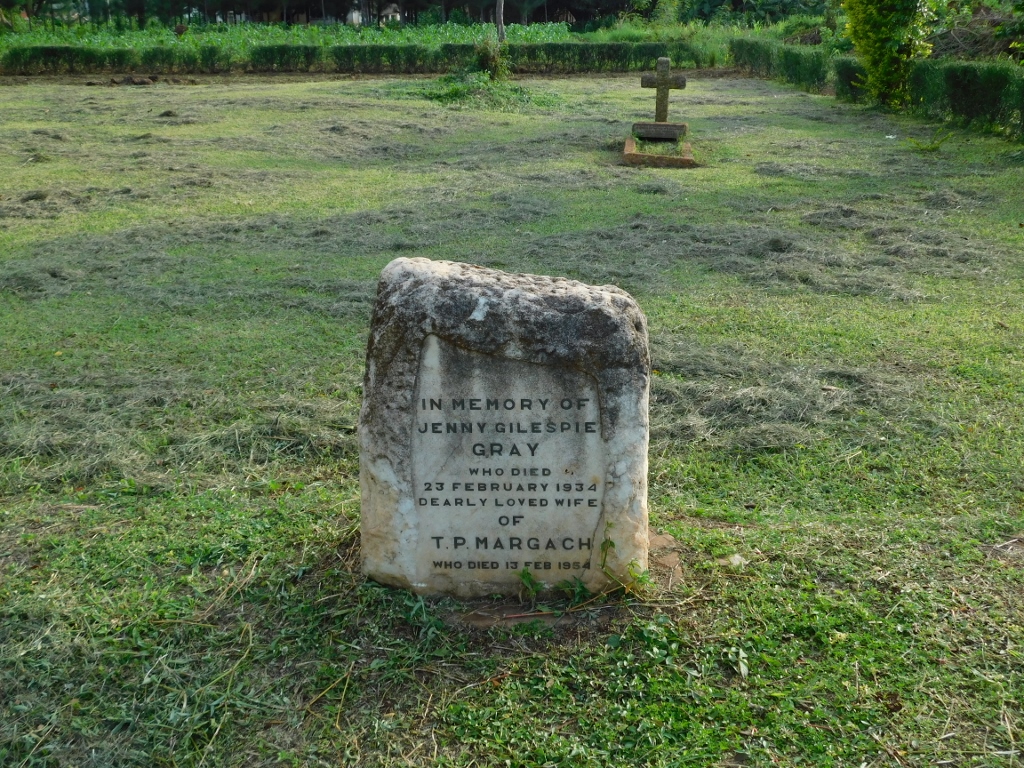 European Cemetery in Masindi
European Cemetery in Masindi
I find it truly fascinating to think that at the time when these individuals passed away, Great Britain reigned supreme here, regardless of the form. Things have changed to a degree that was almost unimaginable at that time.
Contemplating the transience of life, as well as that of systems and establishments, I also spotted something quite mundane, but endlessly interesting to me. It was another marabou stork (Leptoptilos crumenifer) that was clearly on its way to build or repair its nest, not pondering the philosophical questions that were passing through the mind of a Homo sapiens.
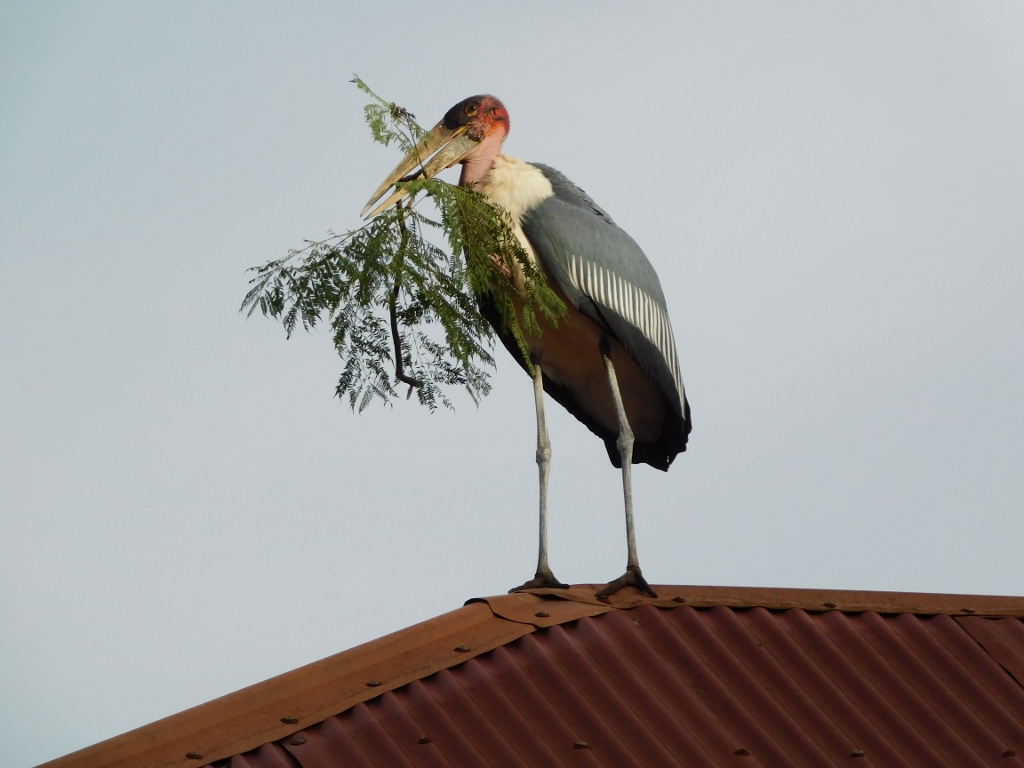 Marabou stork
Marabou stork
After this, Susan and I headed towards two more notable places mentioned in the guide we were using. However, on this occasion, we also noticed the weaknesses of the brochure – imprecise instructions and a poorly executed map. Additionally, a part of the text had faded over time due to bad photocopying. Nevertheless, the walk was good and ultimately successful.
First, we went to Kabalega Primary School that began operating at the beginning of the 20th century. Today, this beautiful historic building is in poor condition and is not in operation. Currently, there is no one interested in funding its renovation.
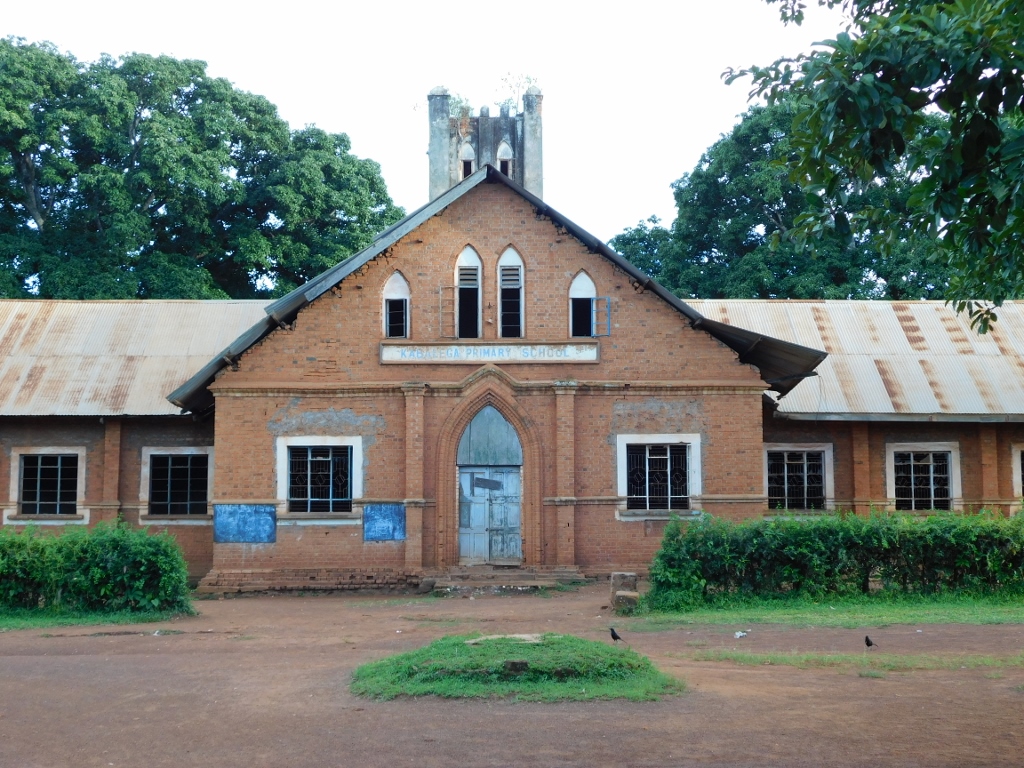 Kabalega Primary School in Masindi
Kabalega Primary School in Masindi
By the way, the school is named after Kabalega (1853-1923) who, as Chwa II Kabalega, was the King/Omukama of Bunyoro (1870-1899), ruling over a Bantu kingdom in western Uganda. I’ve already mentioned that the sub-region where Masindi is located is called Bunyoro today, stemming from the name of this kingdom. Incidentally, although Uganda is a republic with its president, it comprises five traditional kingdoms and several chiefdoms.
As for Kabalega, he was one serious and brave warrior who even defeated the British and the Ottoman forces attempting to colonise his kingdom. However, in 1894, the British declared war on Bunyoro and from that year until gaining independence, Uganda, as I’ve mentioned before, was their protectorate. In 2009, Kabalega was declared a national hero of Uganda.
Not far from this school building, there is another notable place from the brochure I received – St. Matthew’s Cathedral. However, besides the name, I haven’t been able to find any information on why this cathedral is significant as a landmark.
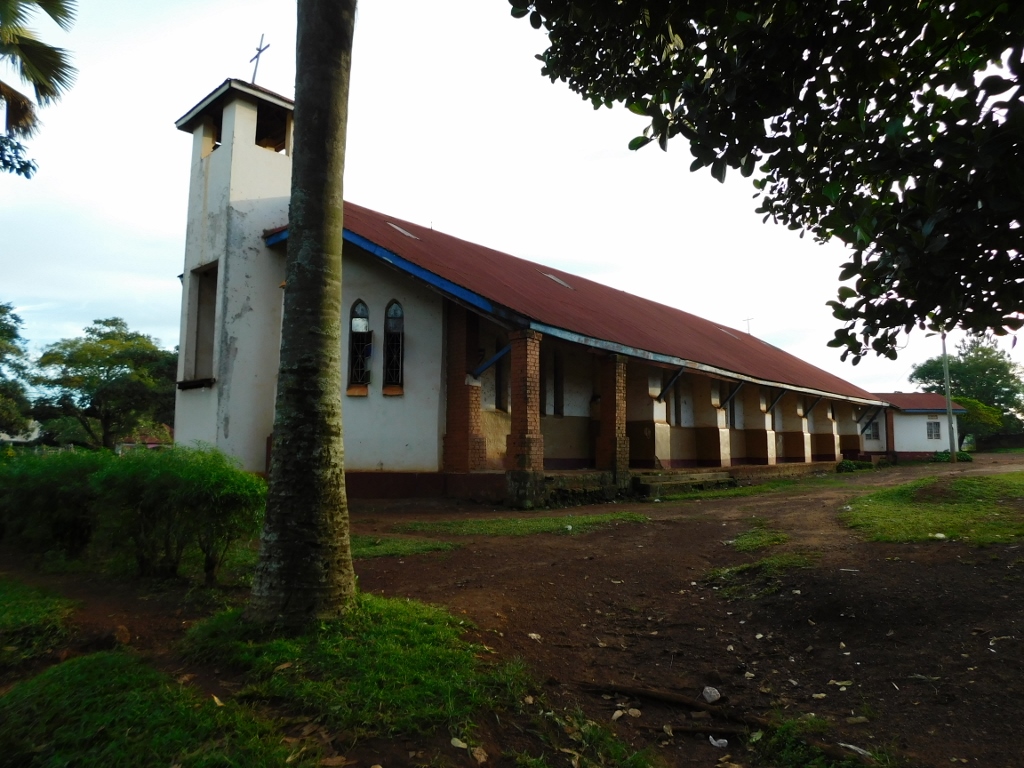 St Matthew’s Cathedral in Masindi
St Matthew’s Cathedral in Masindi
Still, this is a good point to mention that the majority (over 84%) of today’s Ugandan population belong to Christian churches (Catholic, Anglican and others), nearly 14% are Muslims and just under 2% adhere to traditional religions, “other” religions or are atheists.
As the day was getting close to its end, Susan and I went for tea at a significant historical place – the Masindi Hotel.
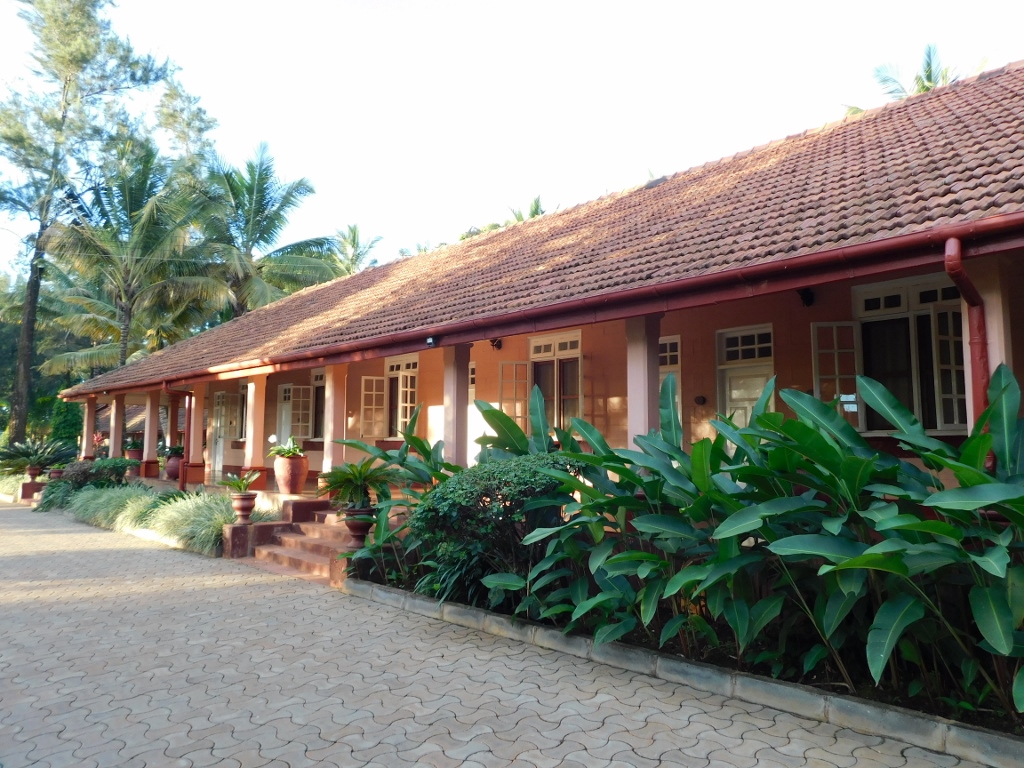 Masindi hotel
Masindi hotel
The hotel was built in 1923 by the railway company I’ve mentioned before and it is still considered the best in the city. However, part of its glamour is associated with contemporary culture, as it hosted guests like Ernest Hemingway, Humphrey Bogart, and Katharine Hepburn.
When we arrived, there was no one but us and the waiter, meaning no Hollywood stars, so we could choose where to sit in the beautiful hotel restaurant. We had to wait a little for our orders to be brought to us, but that was not a problem for Susan and me. Despite her being much younger, since we are both very talkative, we managed to find a variety of topics and laughed a lot. She even invited me to her home one day where I met her lovely children and husband. I felt very comfortable and relaxed, as if I were with friends I had known for a long time.
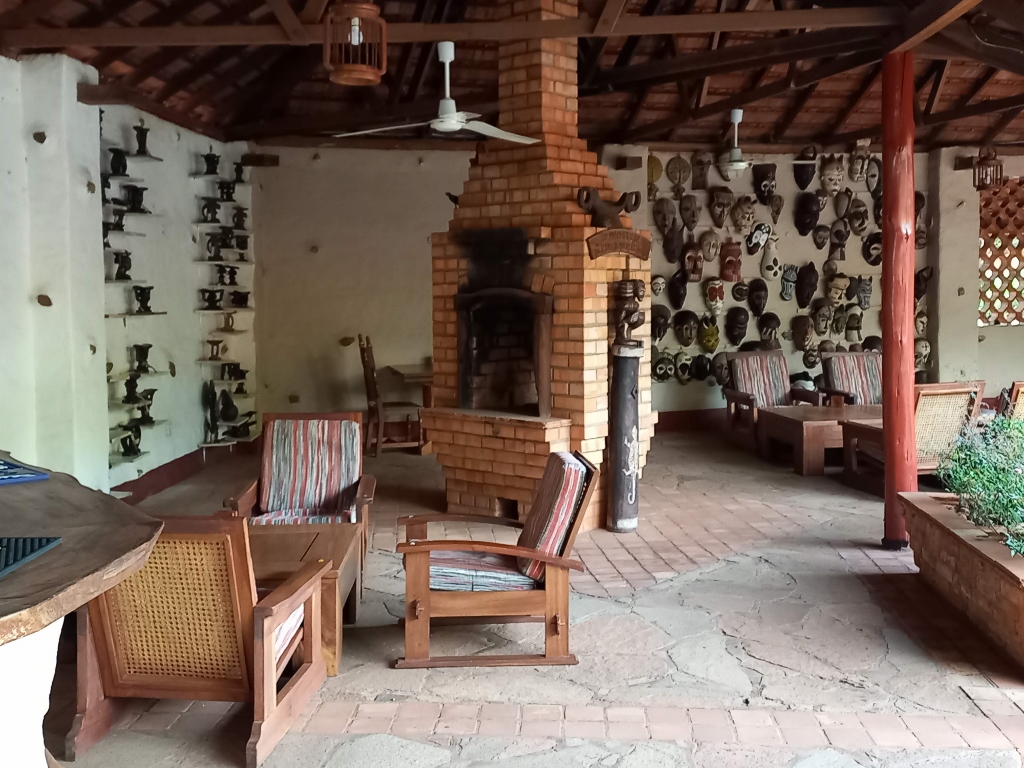 Masindi hotel
Masindi hotel
And as for the Masindi Hotel and our order, though the taste of the tea won’t come across in the photo, I have to say I chose something extremely exotic by my standards. I had never come across such tea before and I simply had to try it. It was the Dawa tea with cinnamon and garlic! Dawa means ‘medicinal’ and it is believed to be a cure for almost all ailments. Later, I read that Dawa tea can also be made with turmeric, ginger and cloves, but here at the Masindi Hotel, they offered the version with cinnamon and garlic. Go ahead and brew and drink this tea, and you’ll be healthy.
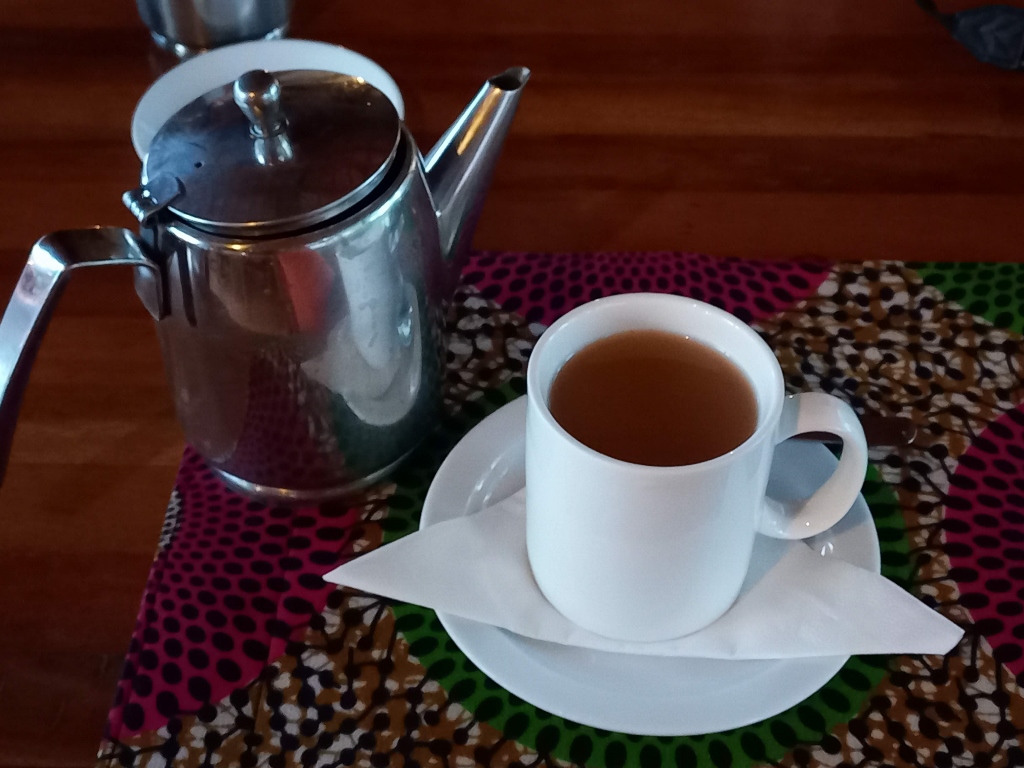 Dawa tea at the Masindi hotel
Dawa tea at the Masindi hotel
Susan and I concluded our walk for the day here. Based on the brochure I used, there were a couple of other notable places in Masindi for me to visit, but when I later tried to locate them on the map, except for the old golf course, which interested me the least, I couldn’t find them.
I mostly regret not being able to locate the monument marking the meeting between King Kabalega and Samuel Baker, a British explorer, held in 1872. During that meeting, Baker asked the King of Bunyoro to annex his kingdom to the British territories. After some overnight consideration, Kabalega rejected the proposal the next day and declared war.
But as I like to say – one always has to leave something for the next time. I hope to have the opportunity to return to Masindi and then I would definitely try to find this monument.
Very pleased with the sightseeing tour of Masindi, I also enjoyed the magical sky full of stars that evening. The moon was just beginning to wax and as Masindi is at a relatively high altitude, the stars were exceptionally clear. I even managed to capture them with my camera.
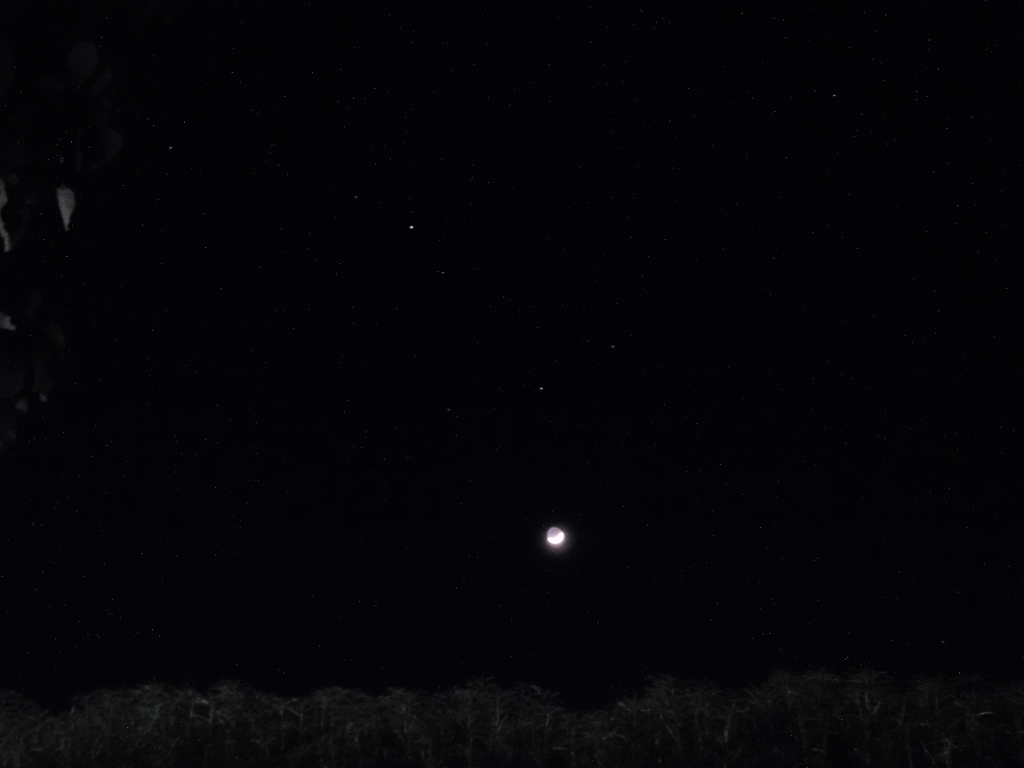 Night sky in Masindi
Night sky in Masindi
And as for the Old Golf Course, it’s not difficult to spot as it is located in the city centre and is a large grassy area. I captured it in photos over the next few days.
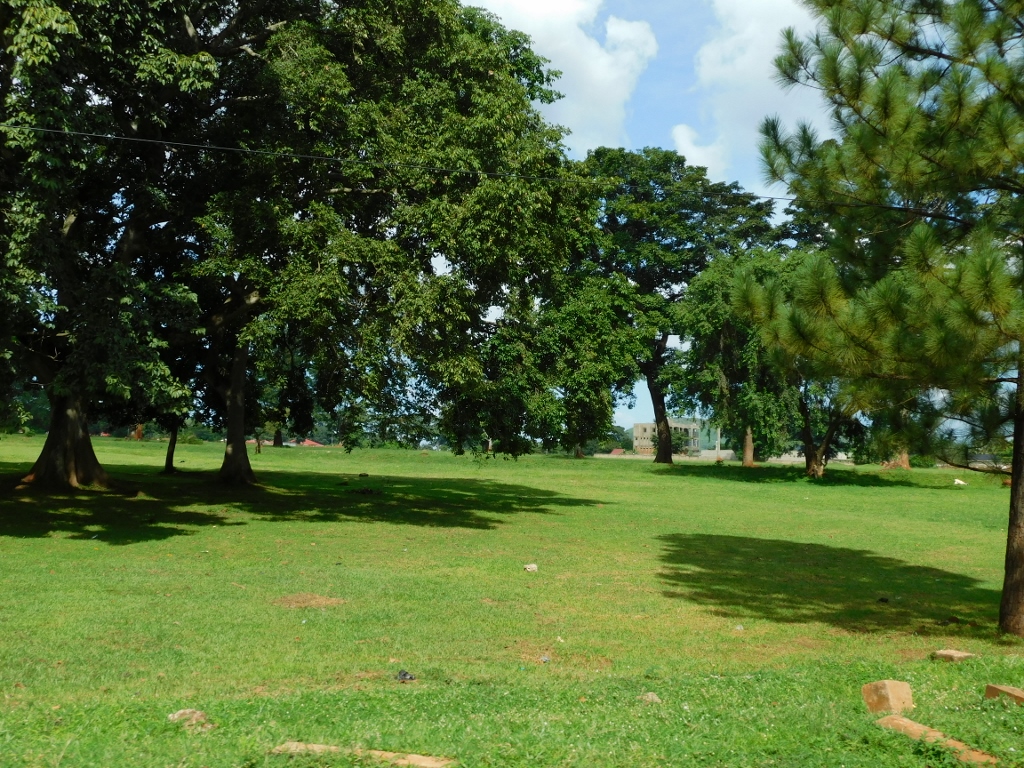 Part of the Old Golf Course
Part of the Old Golf Course
Once, I even noticed a herd of Ankole cattle, a breed raised in Central Africa, passing through a part of the golf course. I think that the course was probably more actively used during the time when the British had a significant influence here.
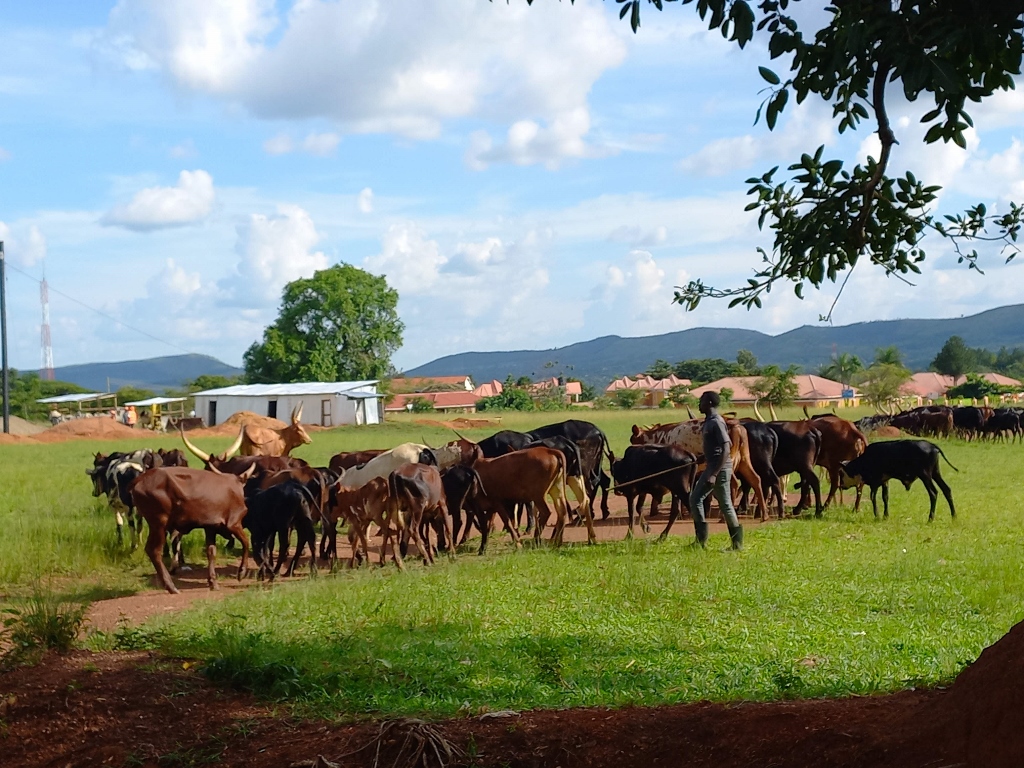 Ankole cattle in a part of the Old Golf Course
Ankole cattle in a part of the Old Golf Course
Passing through Masindi, I often saw very beautiful and/or interesting scenes, and I managed to capture some of them in photographs.
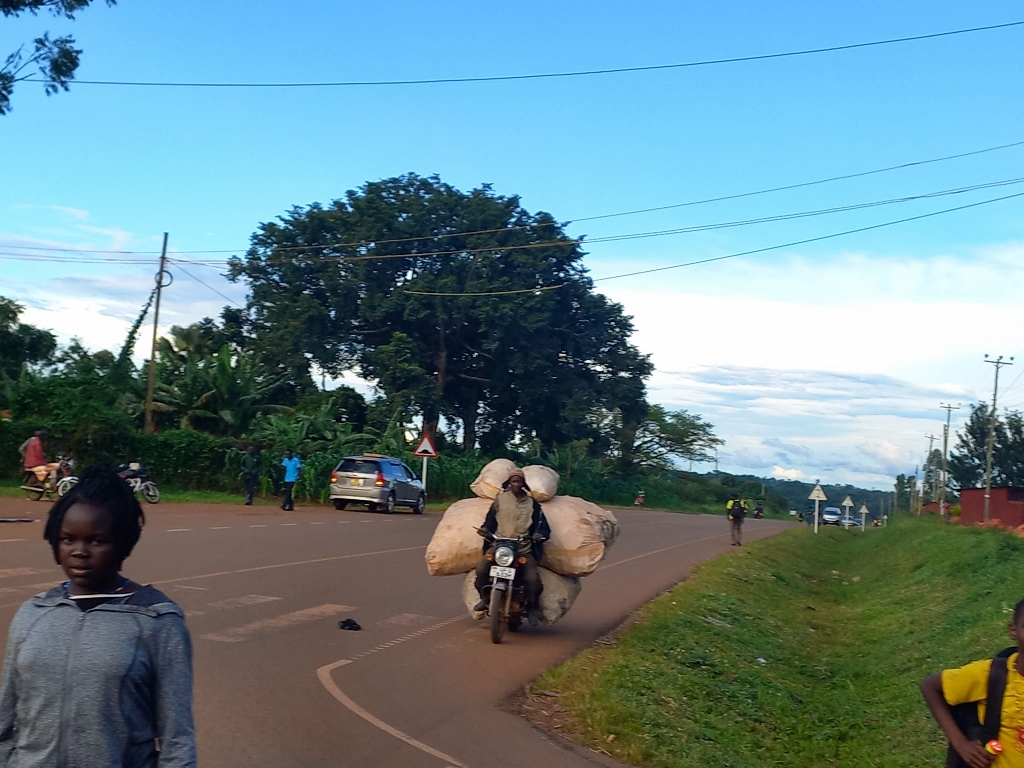 Perfect balance
Perfect balance
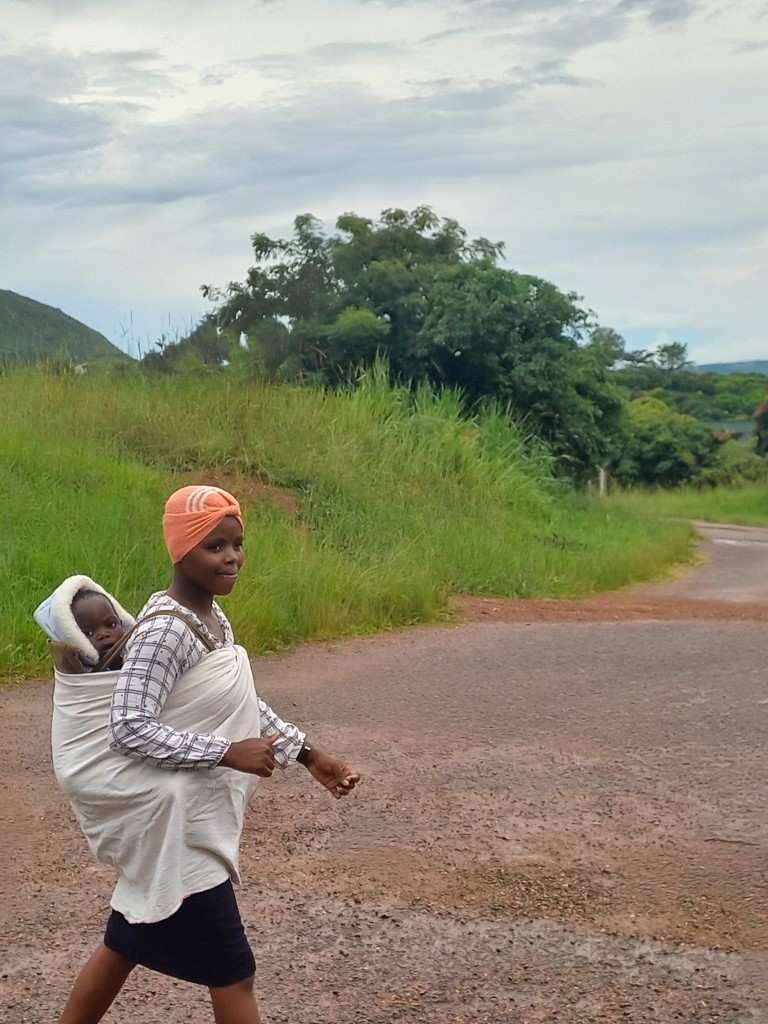 Beautiful young mom and her offspring
Beautiful young mom and her offspring
The devices used in order to catch grasshoppers as a traditional source of protein were also extremely interesting. Susan explained to me how they work. The lights are turned on at night in order to attract grasshoppers and then they hit the metal sheets and slide into bags placed beneath the sheets.
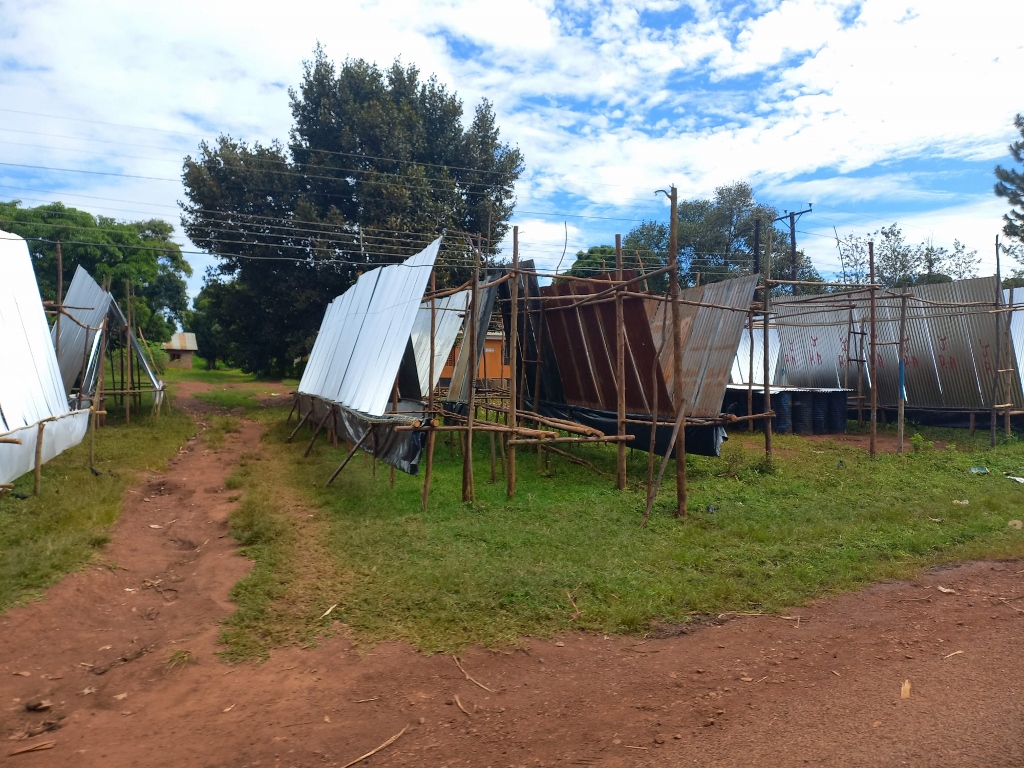 Grasshopper catching devices
Grasshopper catching devices
However, I must admit that I was most amused when I read the following advertisement posted on a pole. I have great respect for traditional medicine, both in my country and in others, so I started reading carefully to see what it said here. The reason I still ended up laughing is probably that I don’t understand local medicine in Uganda, so I can’t imagine how traditional remedies (as I understand the word) are used to catch thieves.
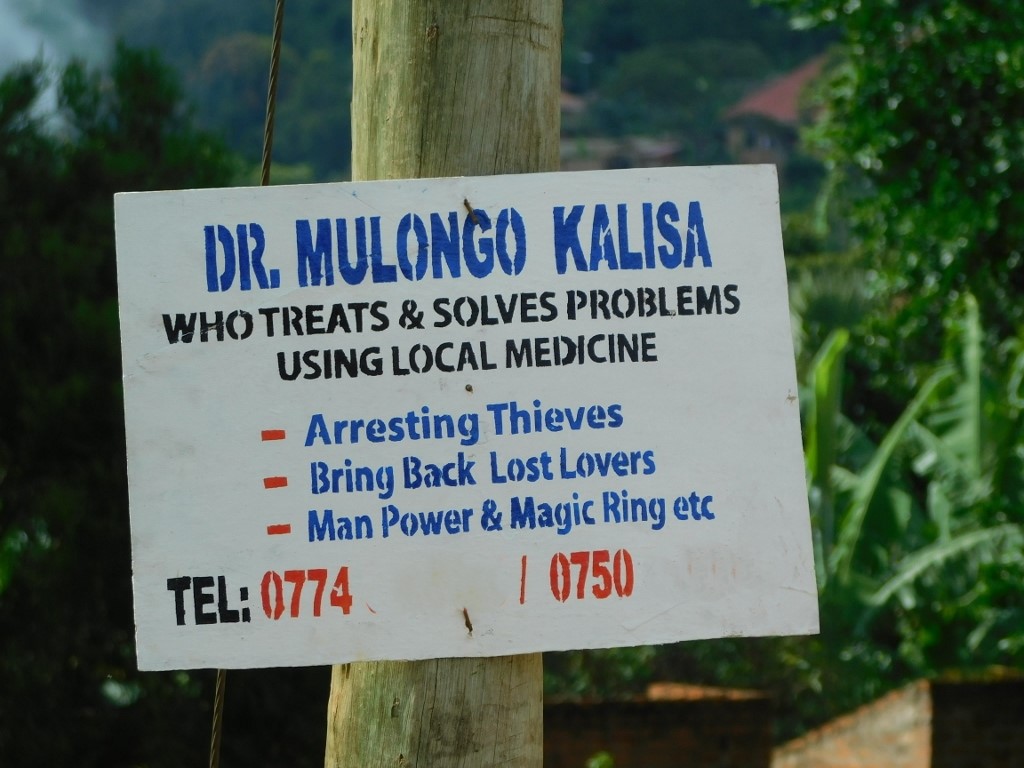 Local ad
Local ad
During the rest of the time I spent in Masindi, I went to the market a few times, including one evening, again with Susan. I really enjoy exploring markets, not just to buy fresh produce, but also to see local customs and what’s on offer. To start, here are some photos I took during the day.
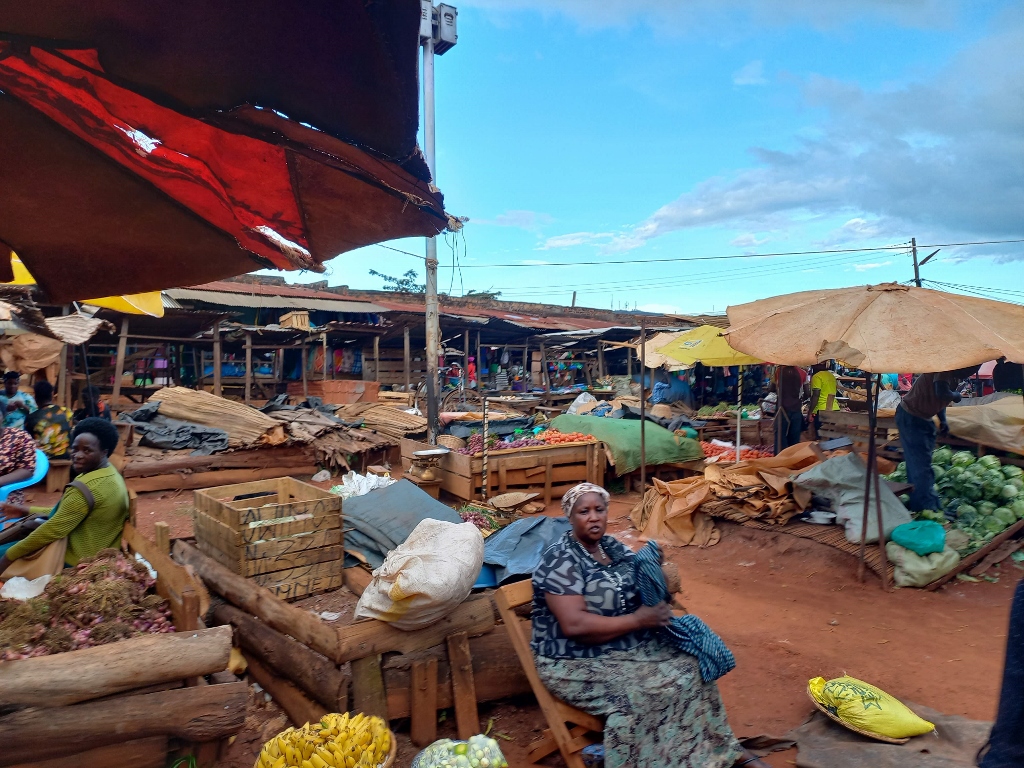 Masindi market
Masindi market
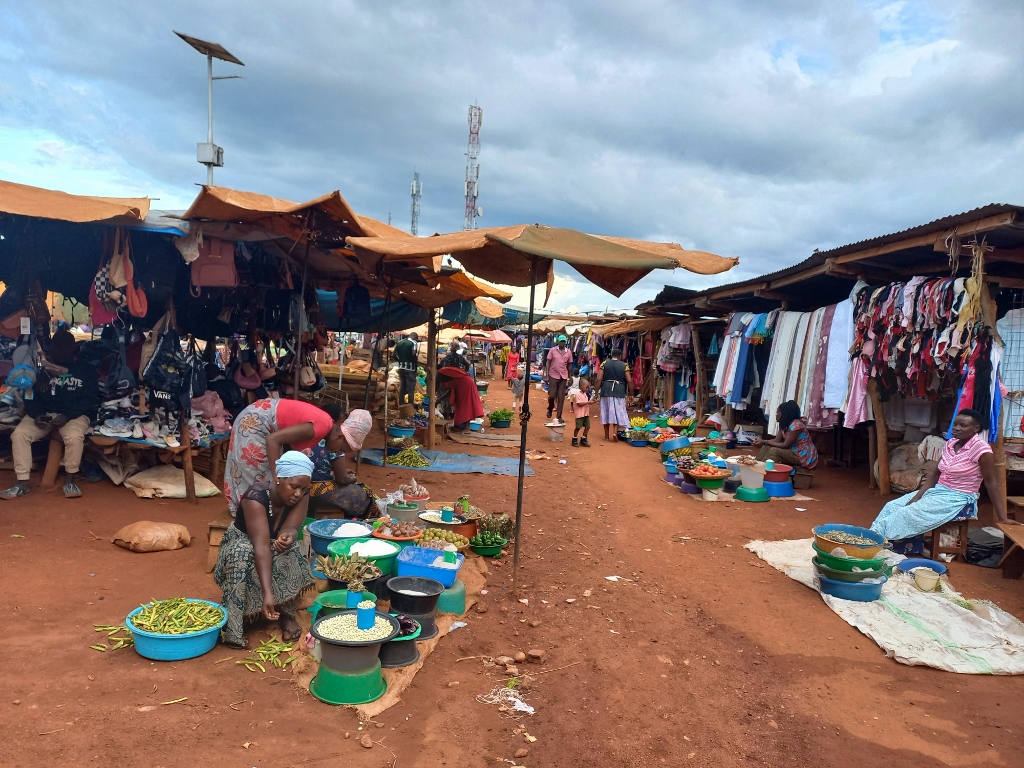 Masindi market
Masindi market
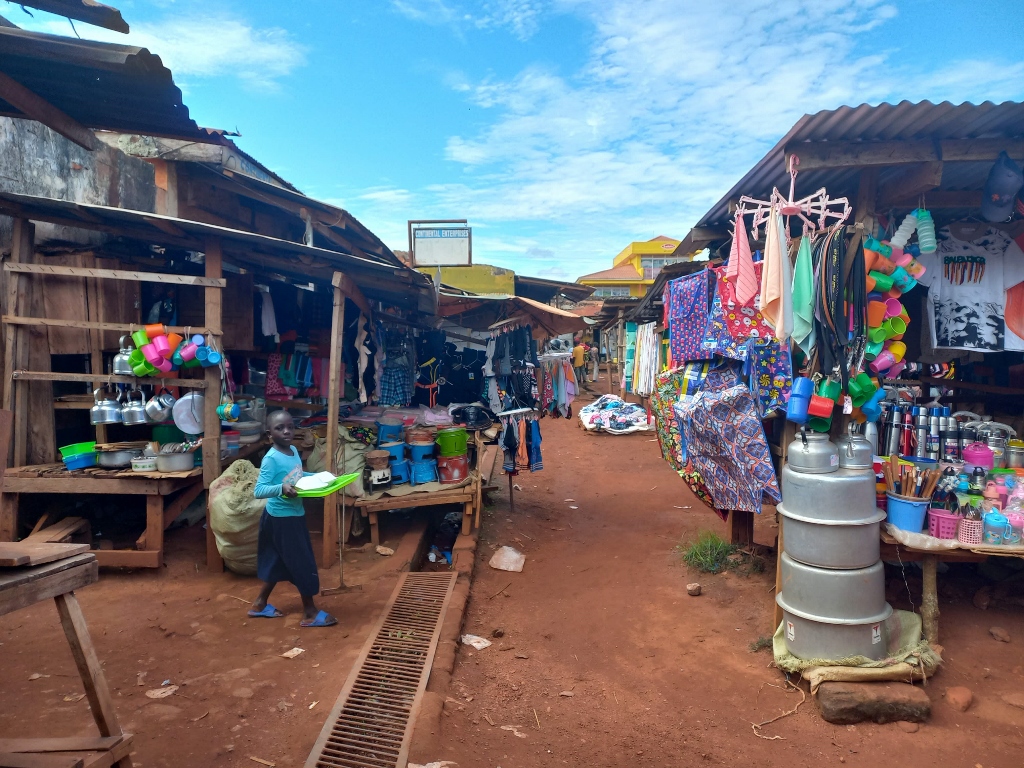 Masindi market
Masindi market
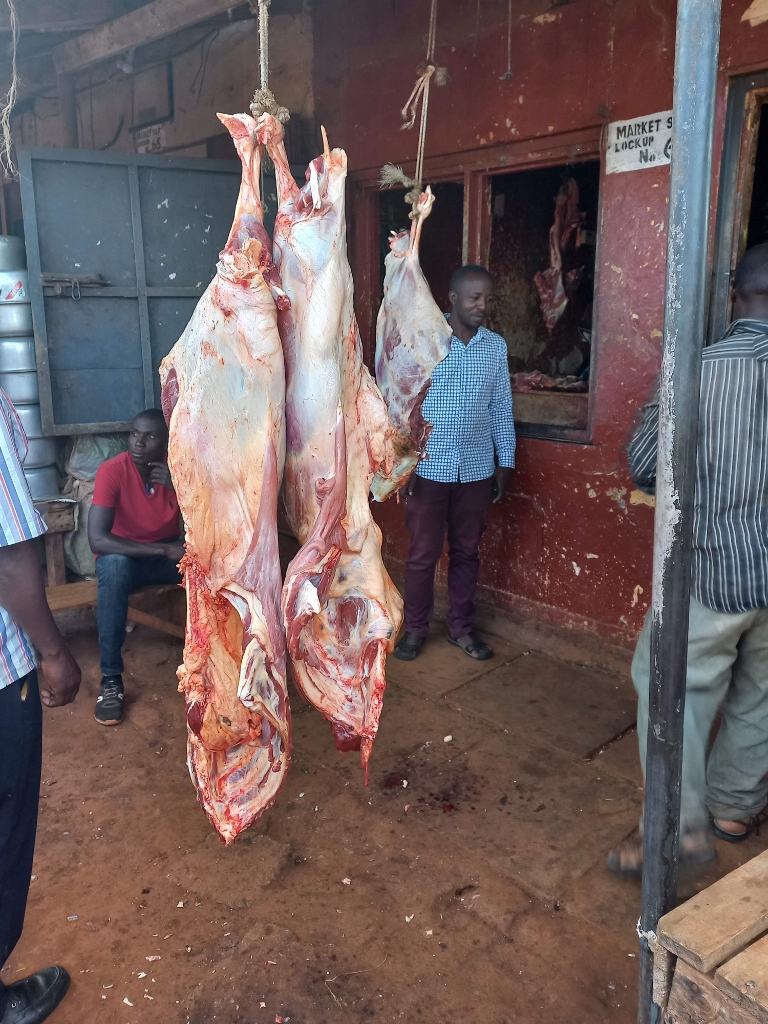 Masindi market
Masindi market
So, I visited the market here both during the day and in the evening. During the evening visit, we arrived when there were still remnants of daylight, but by the time we finished shopping, it was already quite dark. The market was still bustling, full of people and goods being sold, but it was a bit challenging for me to take photos, mainly due to the significant contrasts between the illuminated and unilluminated areas, and I didn’t want to use the flash. Nevertheless, some of the atmosphere can be seen quite nicely in the photos.
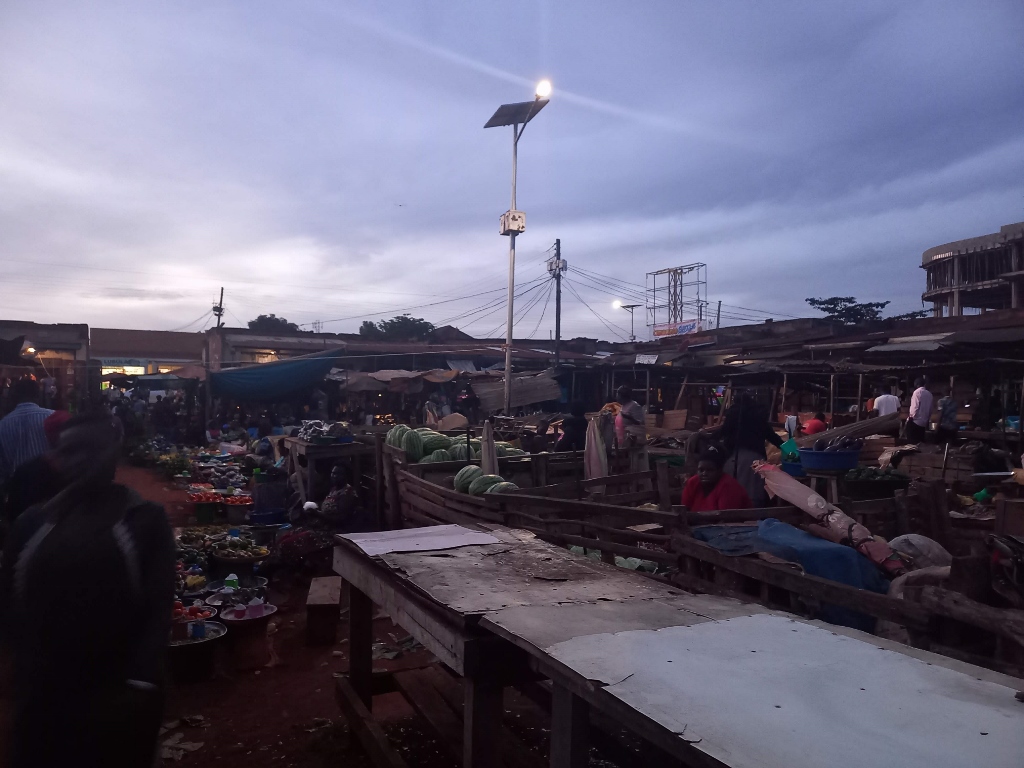 Masindi market
Masindi market
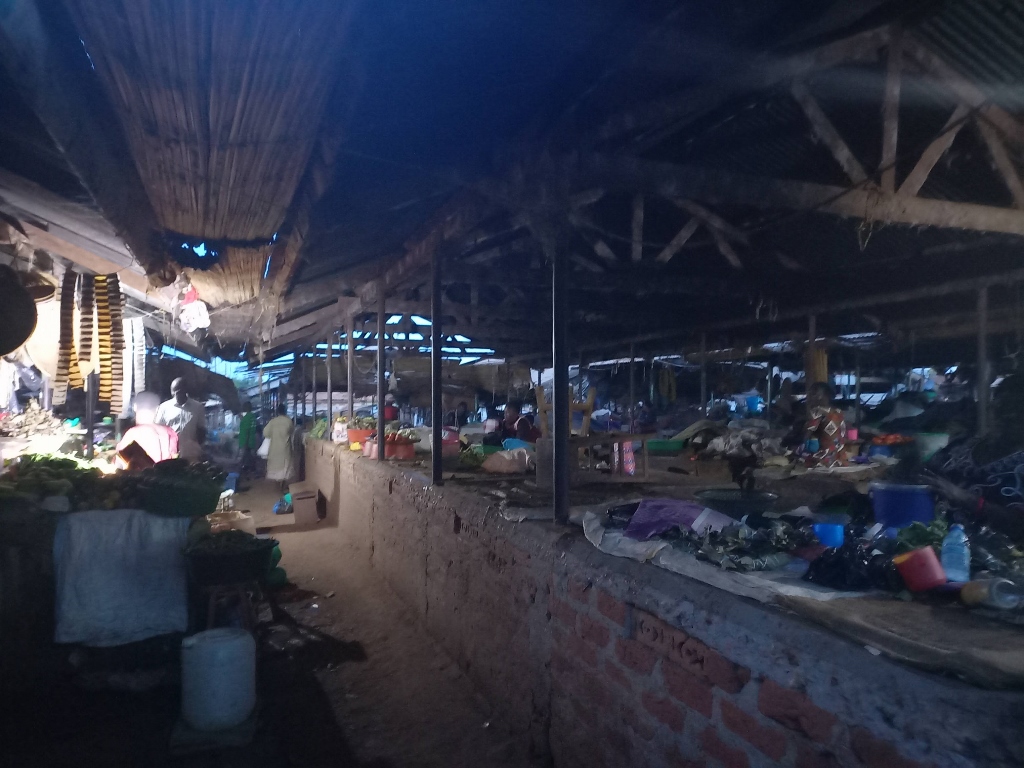 Masindi market
Masindi market
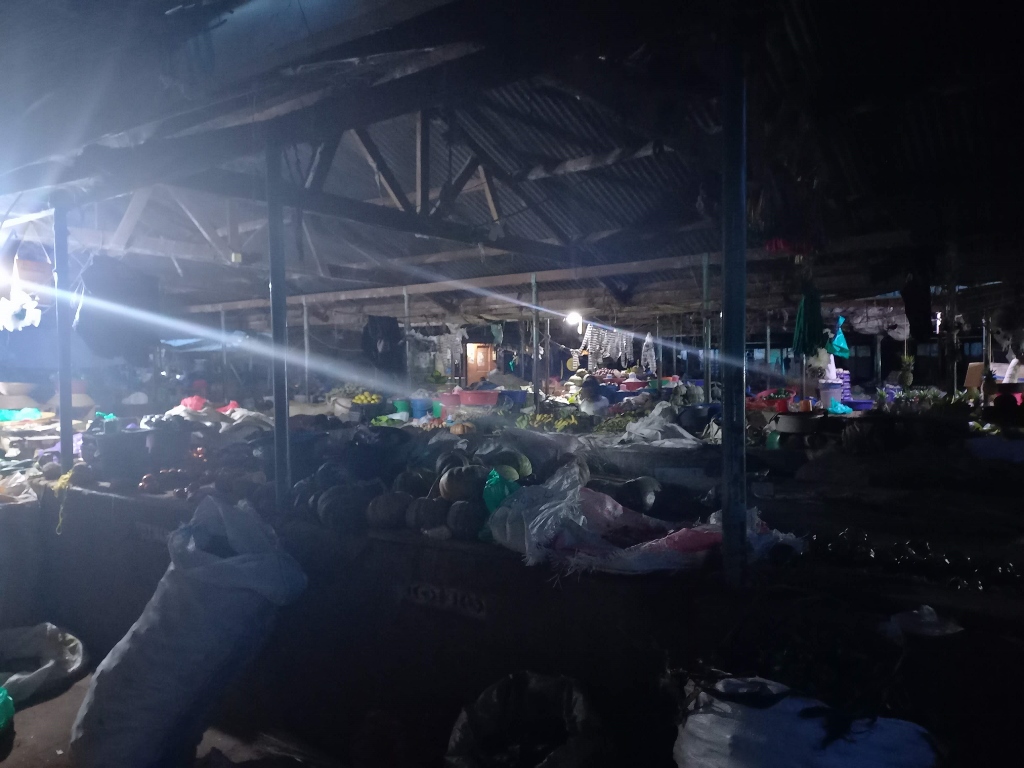 Masindi market
Masindi market
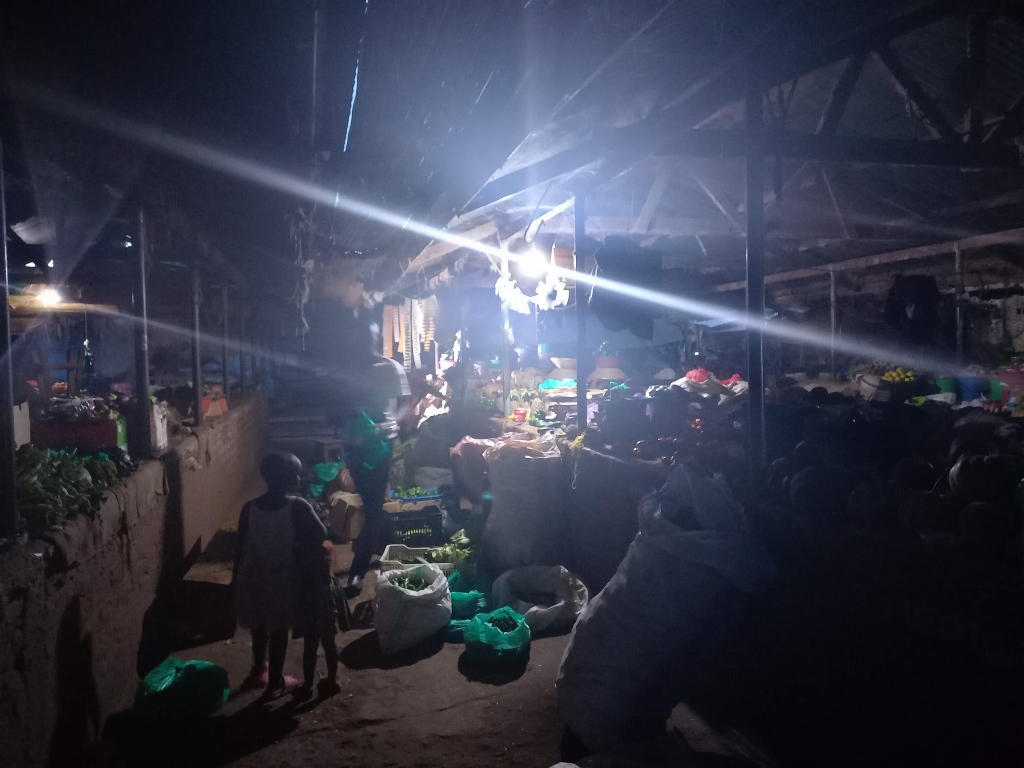 Masindi market
Masindi market
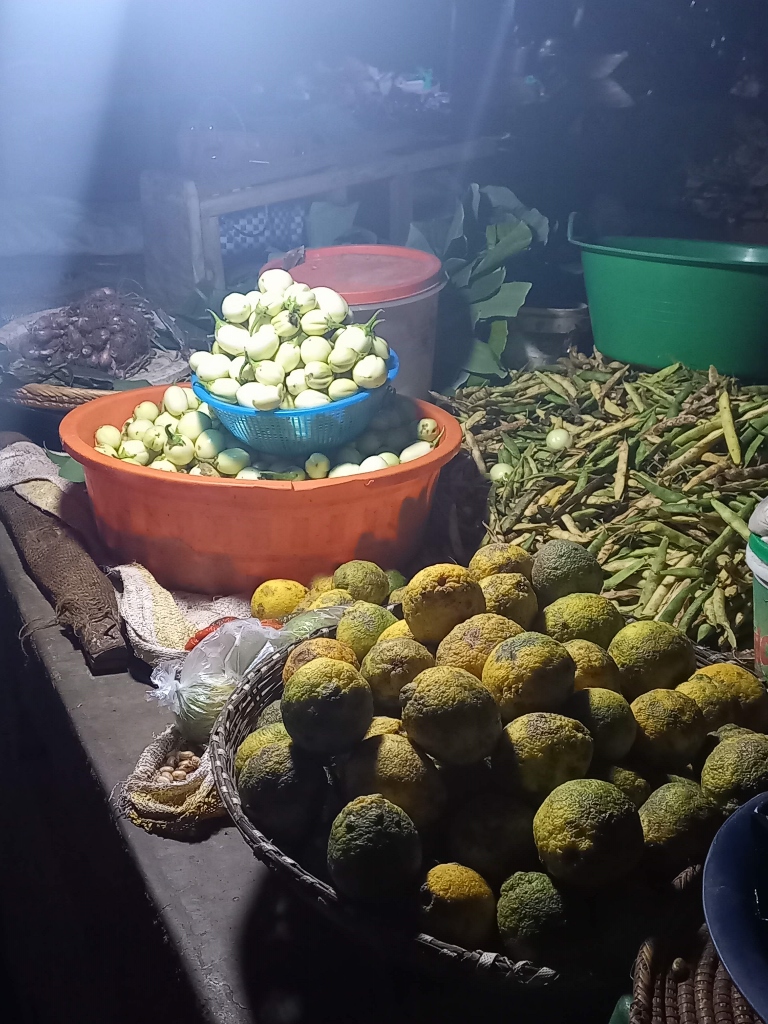 Masindi market
Masindi market
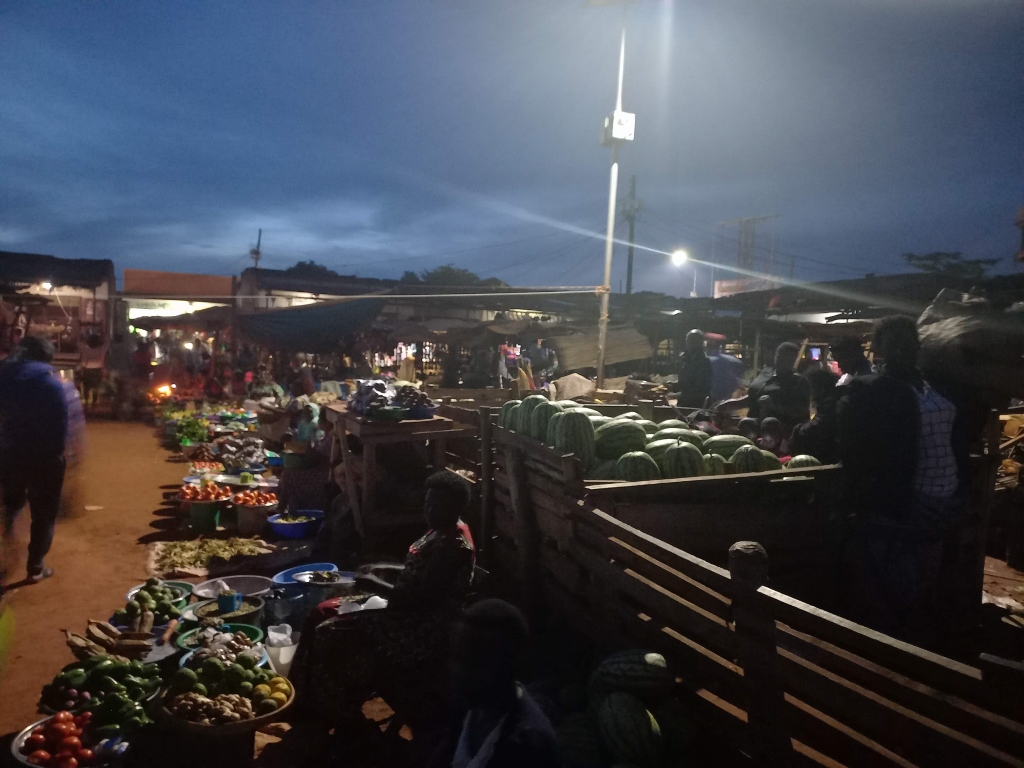 Masindi market
Masindi market
Still, despite all the liveliness, in my mind, the market was much more interesting and picturesque during the day. Probably the main reason for that was my absolute fascination with the colours of Africa that I encountered here throughout my stay in Uganda. During the day, I often widened my eyes more than usual, hoping that maybe more colour would enter my soul that way. Looking at these vibrant colours around me, I was absolutely thrilled and it seemed to me I could sit and just gaze into the distance for hours without getting bored.
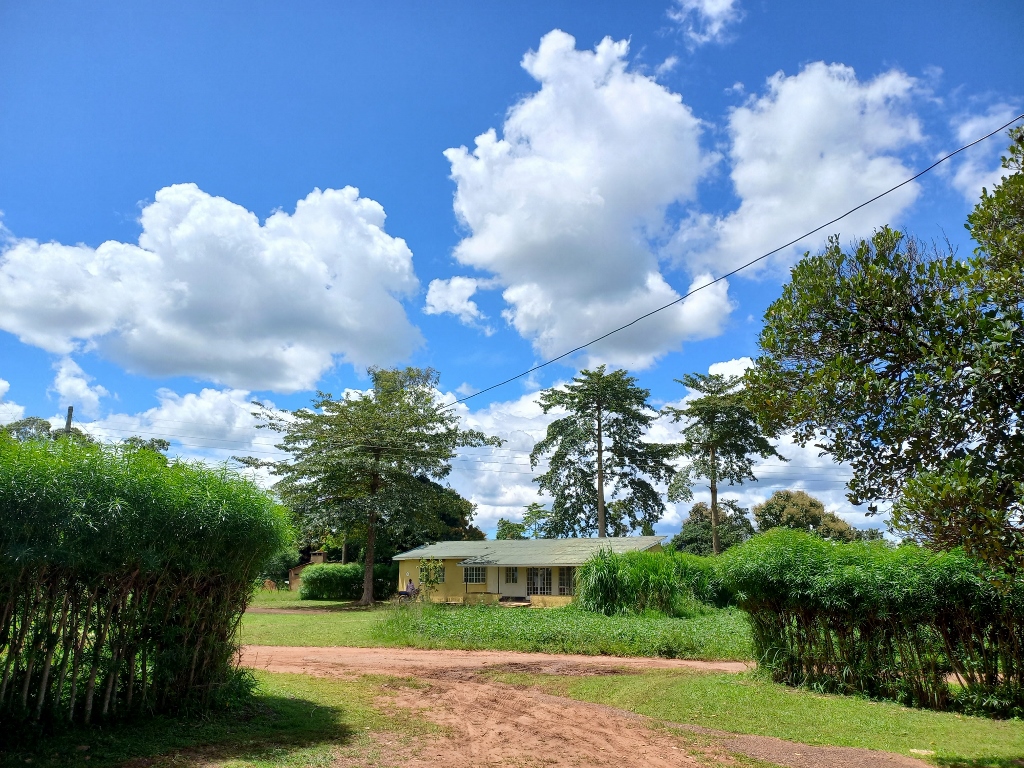 Colours in Masindi
Colours in Masindi
But this story wouldn’t be complete without mentioning the food. Although we mostly ate ‘European’ food during our stay, we also had the opportunity to try various dishes and specialties from this part of Africa. More about that in the next sequel. For now, let me mention that we often had ‘mandazi’ for breakfast, a type of fried dough. First, here is a photo of the ‘original’ and then a photo of the mandazi I made at home using a recipe I found on the internet.
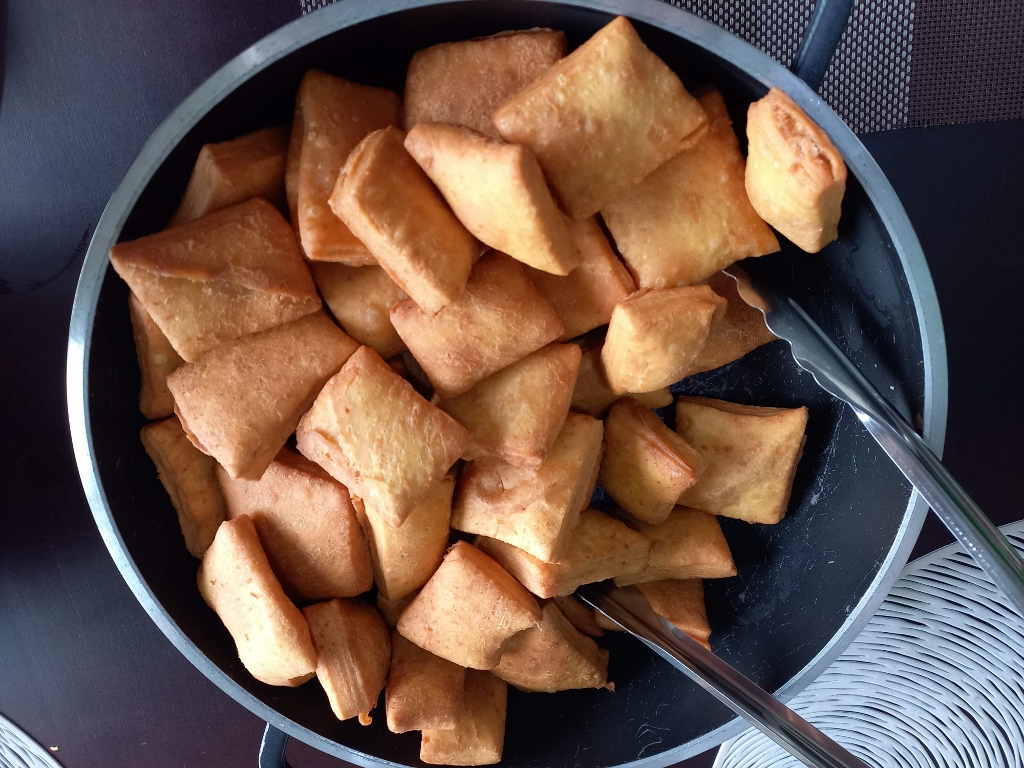 Mandazi from Masindi
Mandazi from Masindi
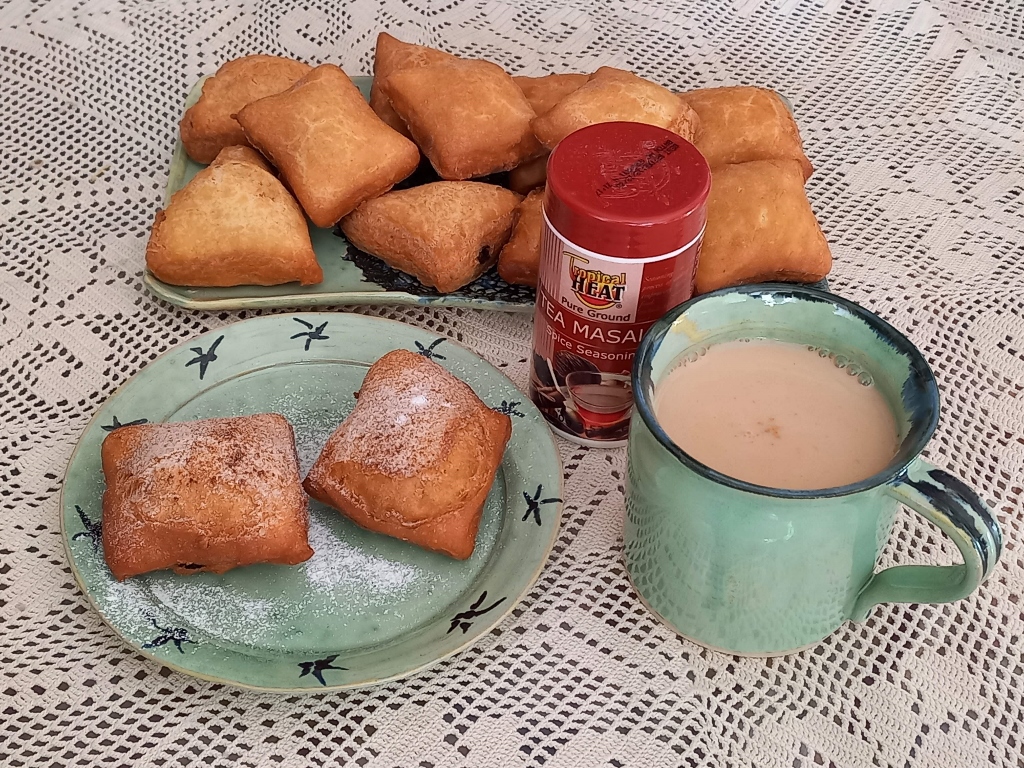 Mandazi from Belgrade and tea with spices from Uganda, all served in dishes I have personally made
Mandazi from Belgrade and tea with spices from Uganda, all served in dishes I have personally made
MANDAZI
- 300 g all purpose flour
- 50 g sugar
- 7 g baking powder
- 1 tsp of ground cardamom
- a pinch of salt
- 1 egg
- 200 ml of coconut milk
Mix the dry ingredients, then add the beaten egg and coconut milk, and combine into dough. Transfer to a floured surface and knead until smooth. Add a little more flour if needed.
Next, roll out the dough with a rolling pin to a thickness of about 5-7 mm, then cut into pieces, approximately 5x5 cm. Fry in deep oil until it gets a nice colour on both sides.